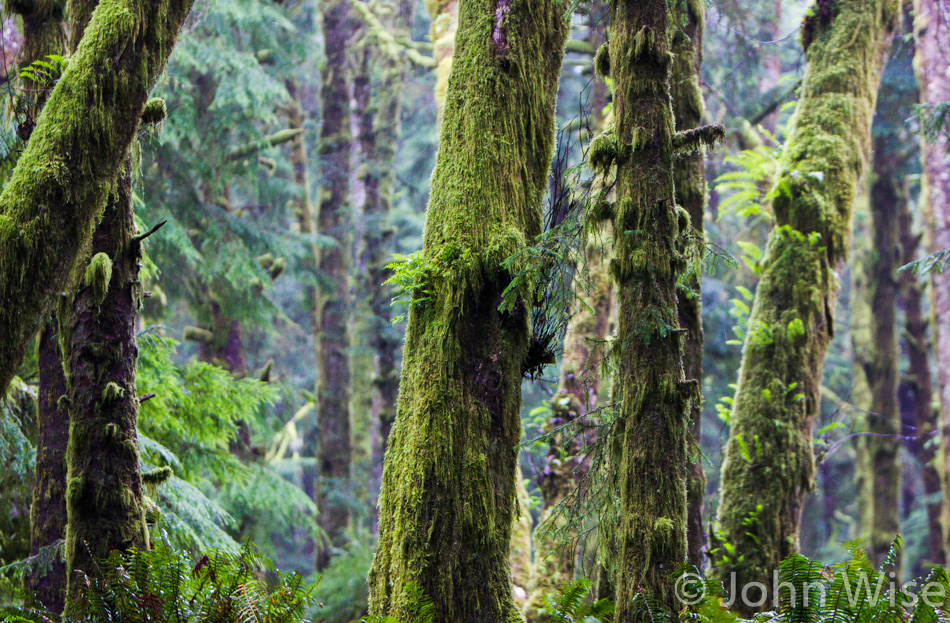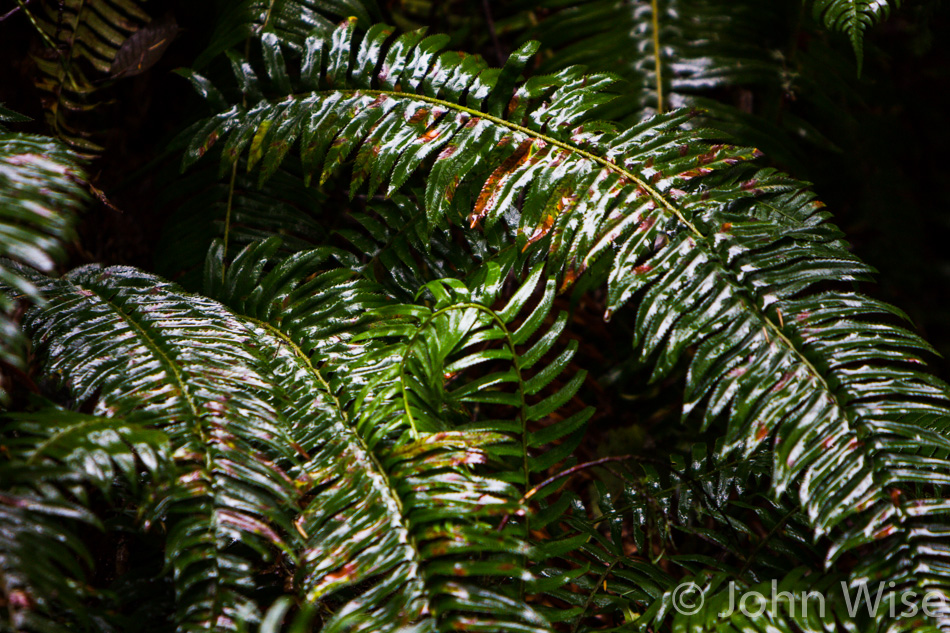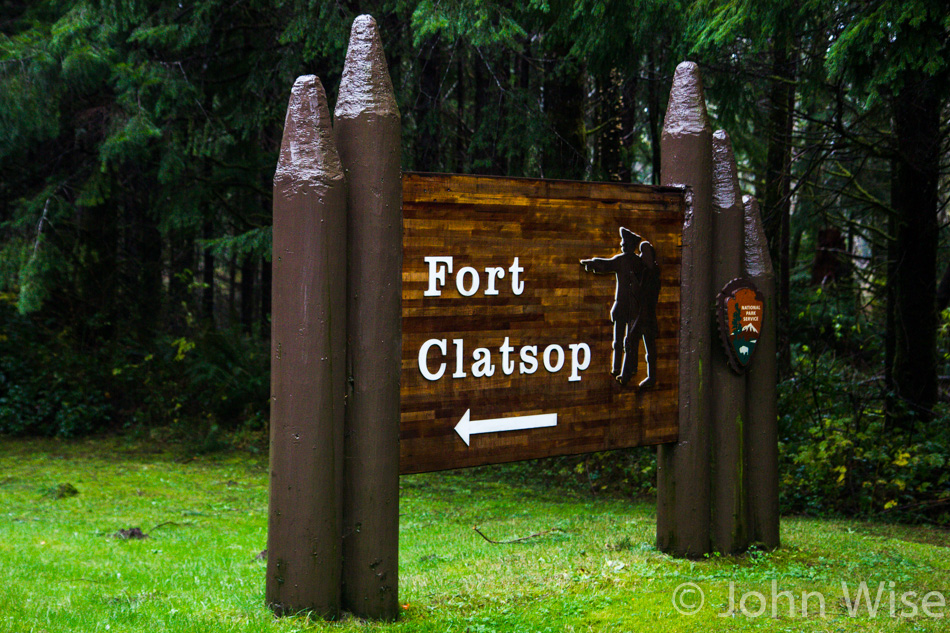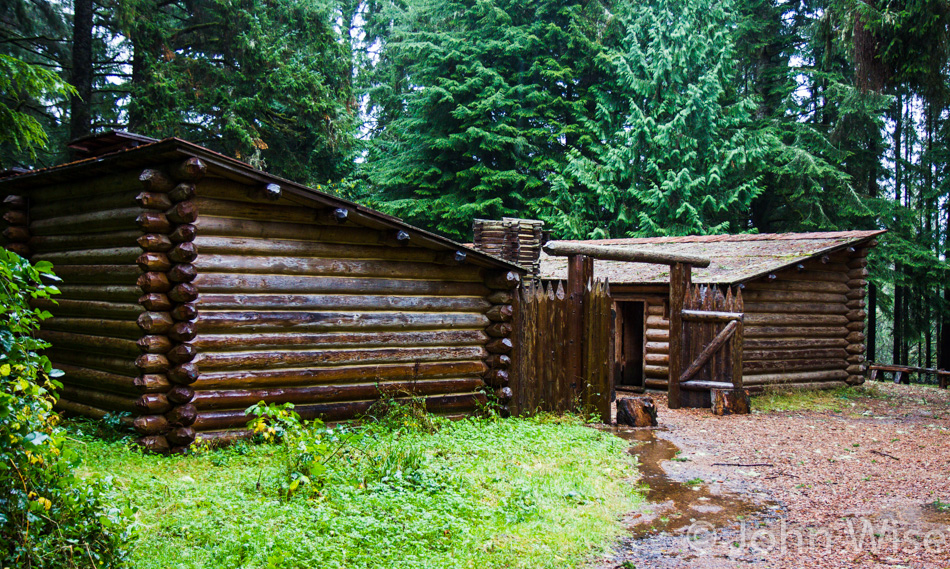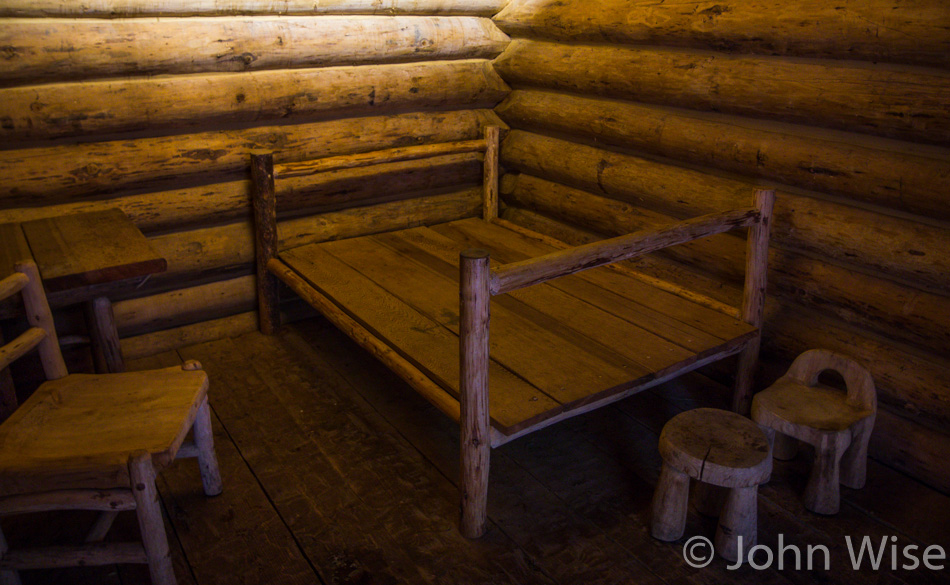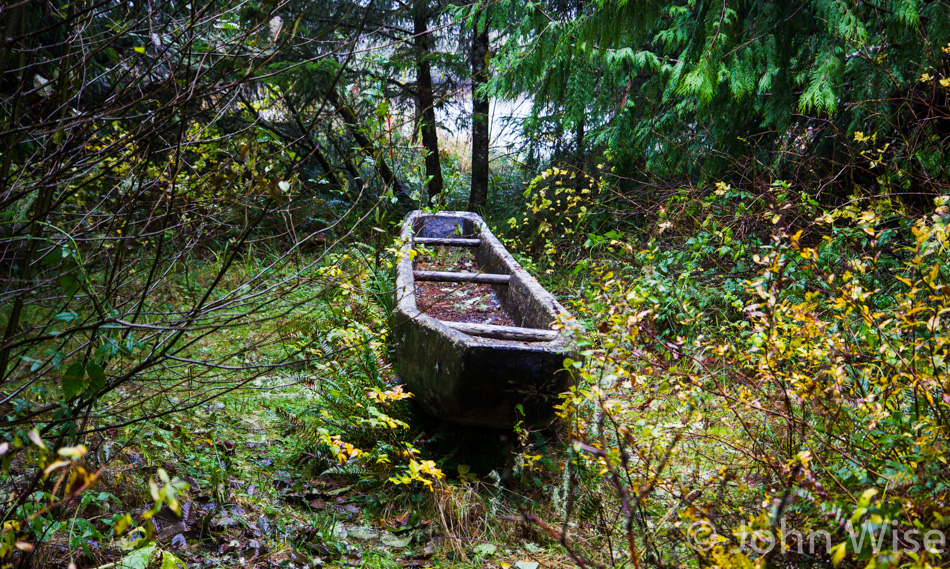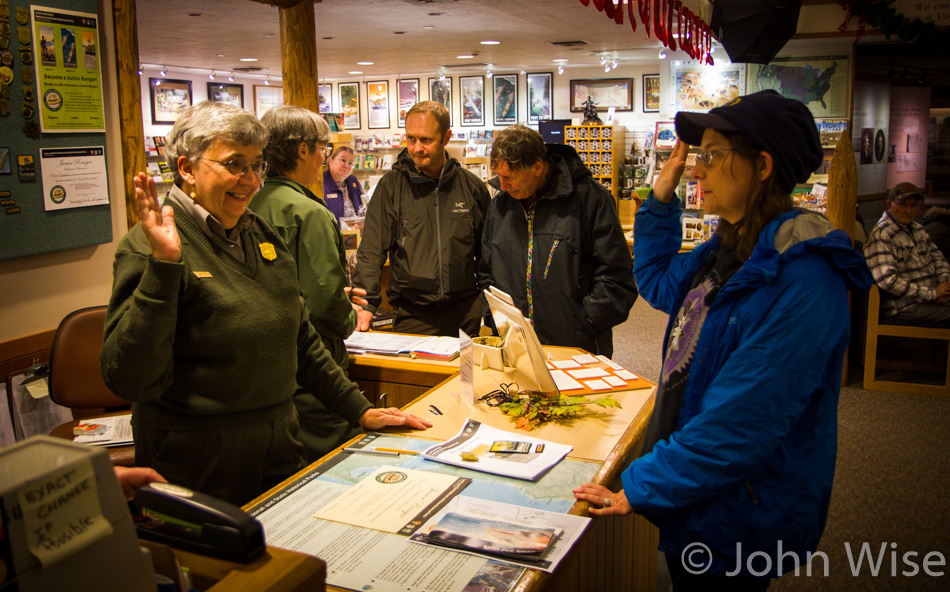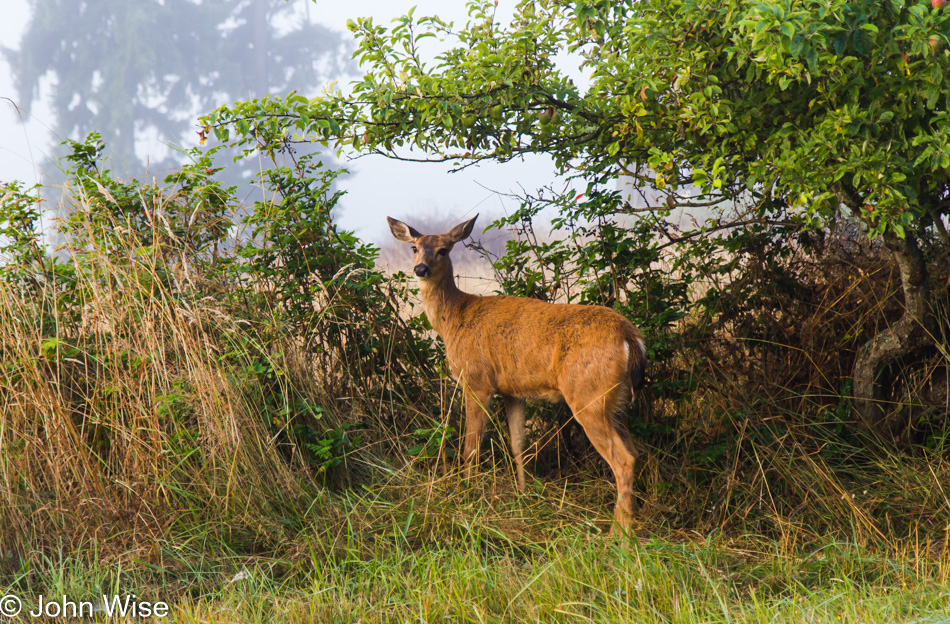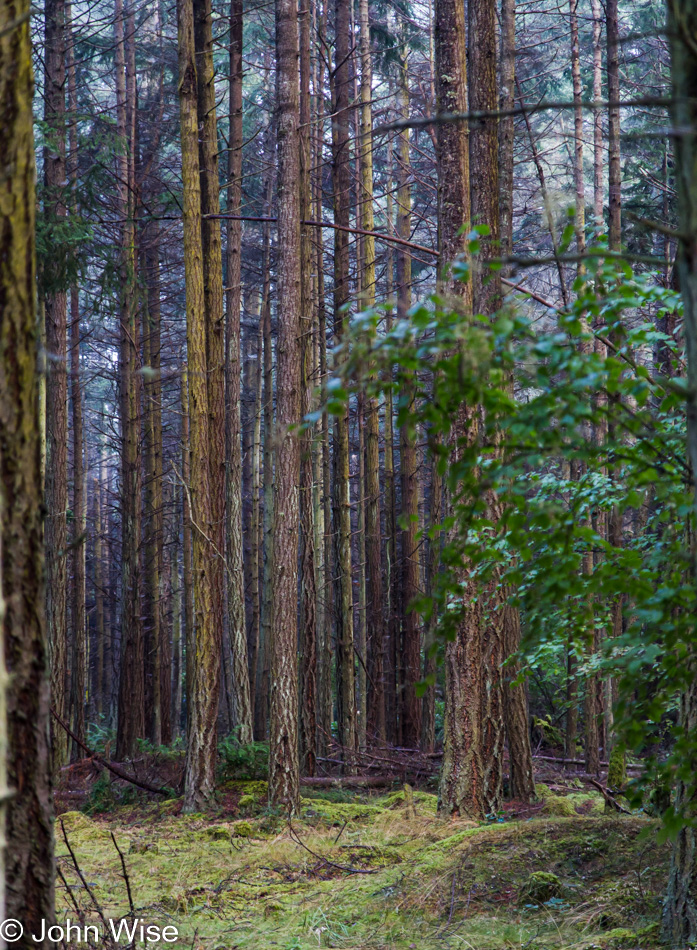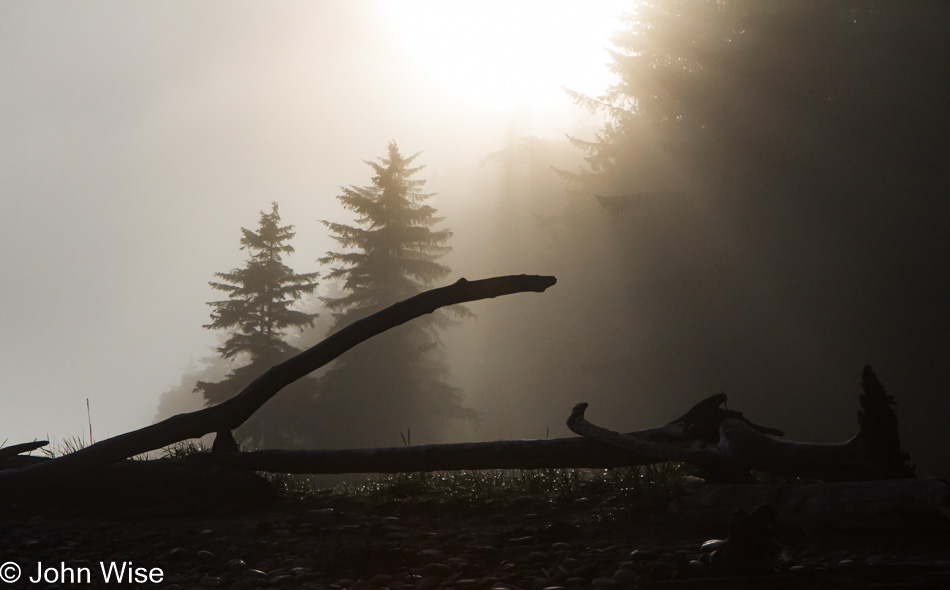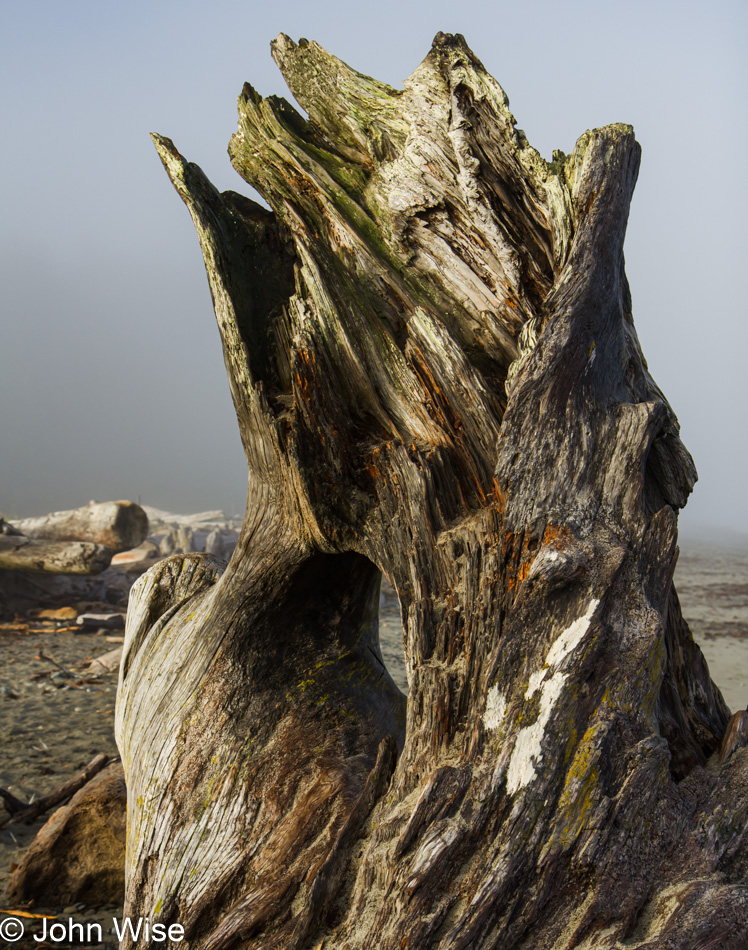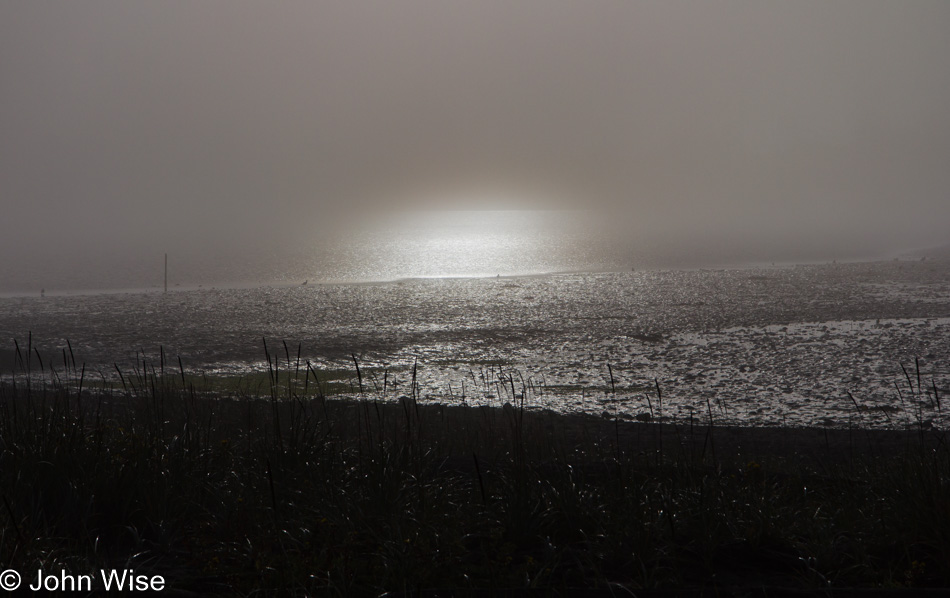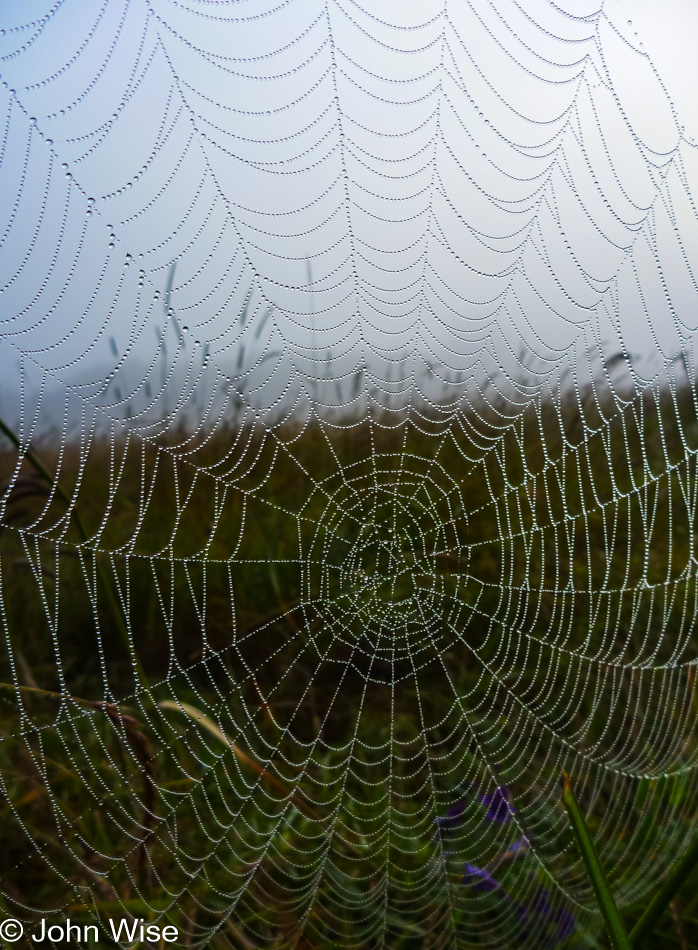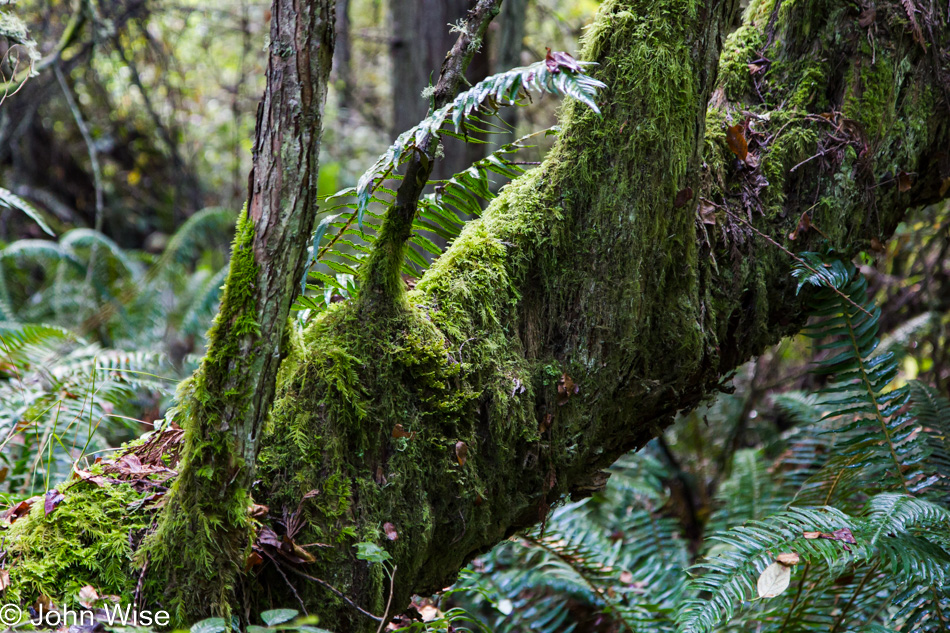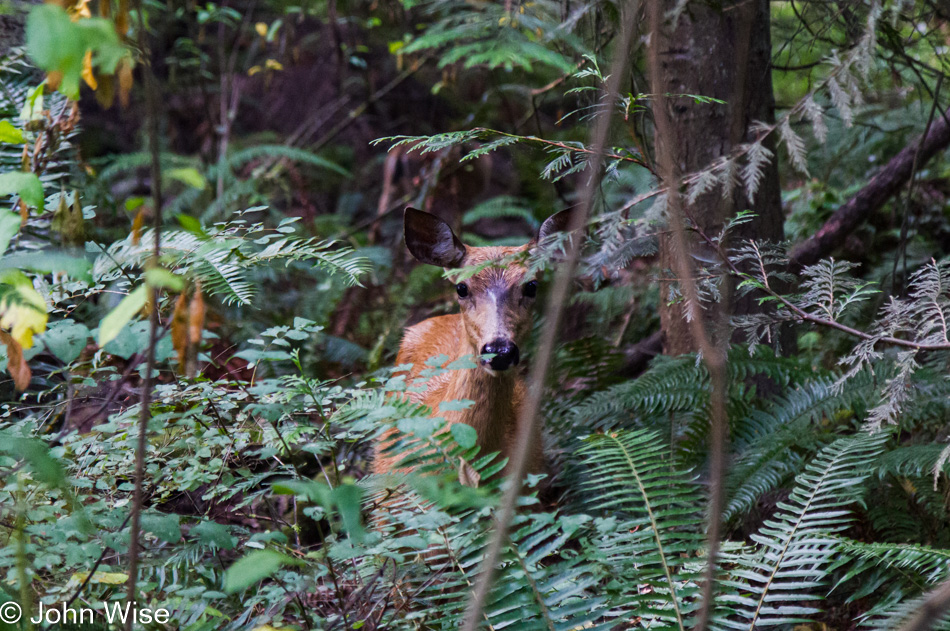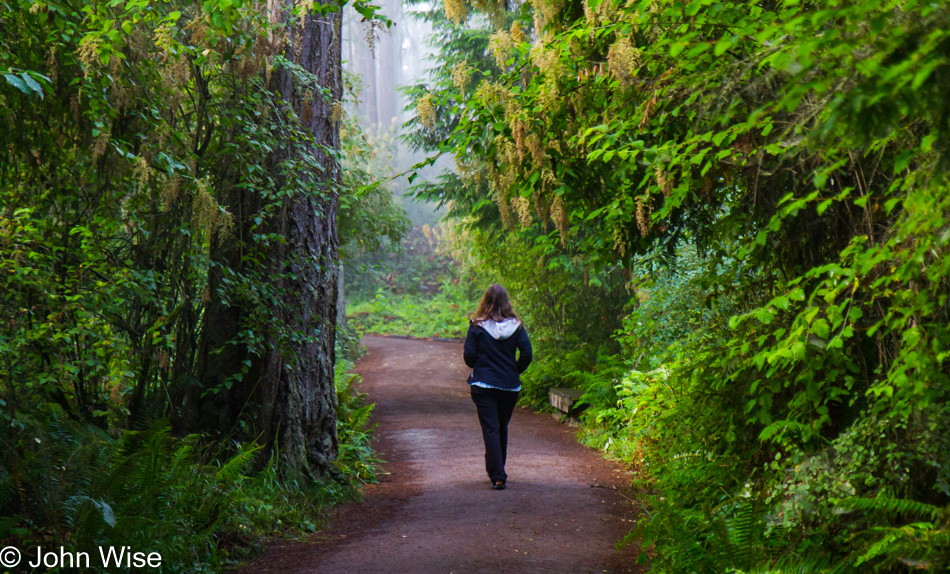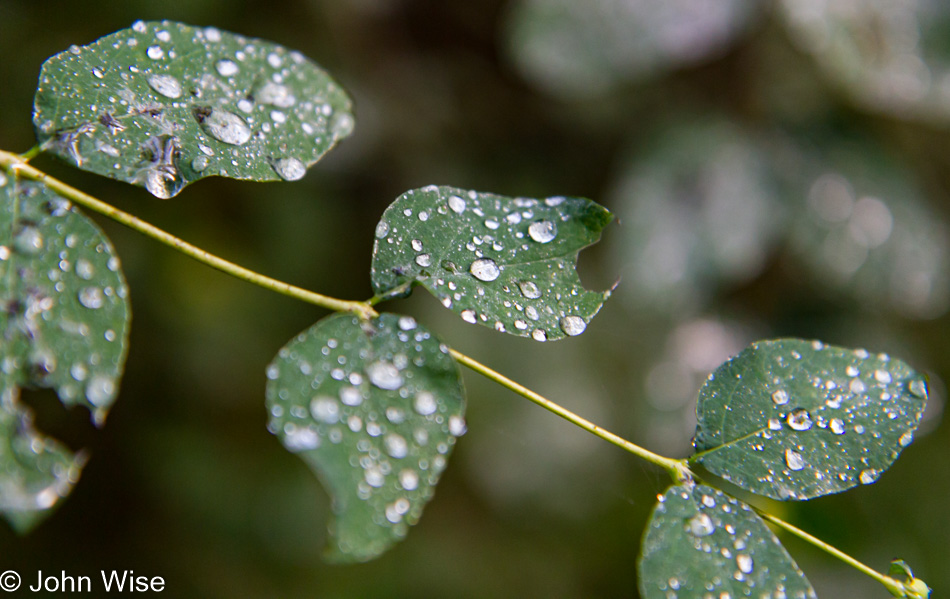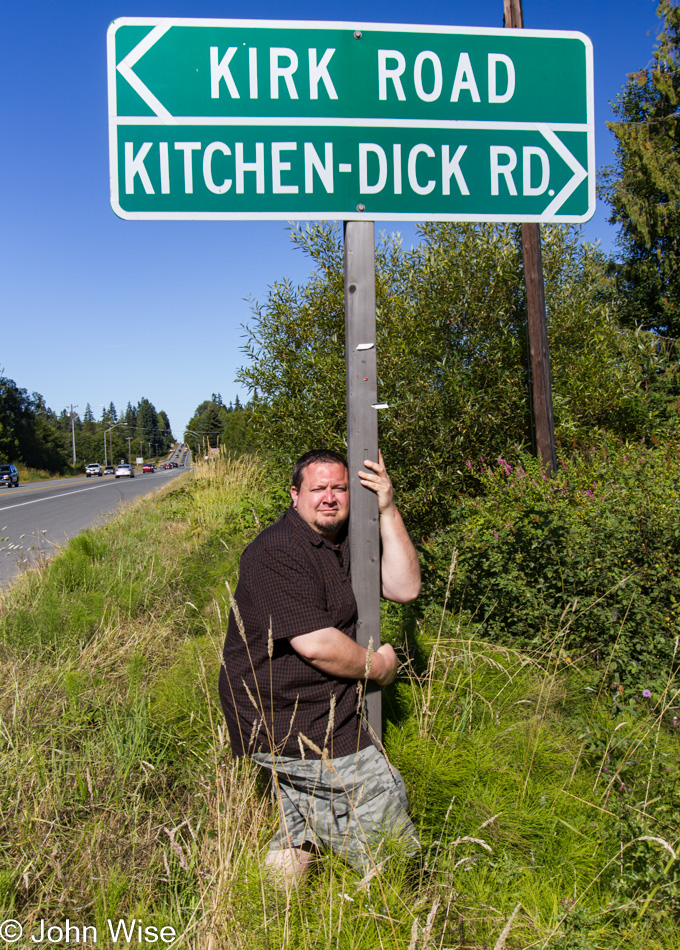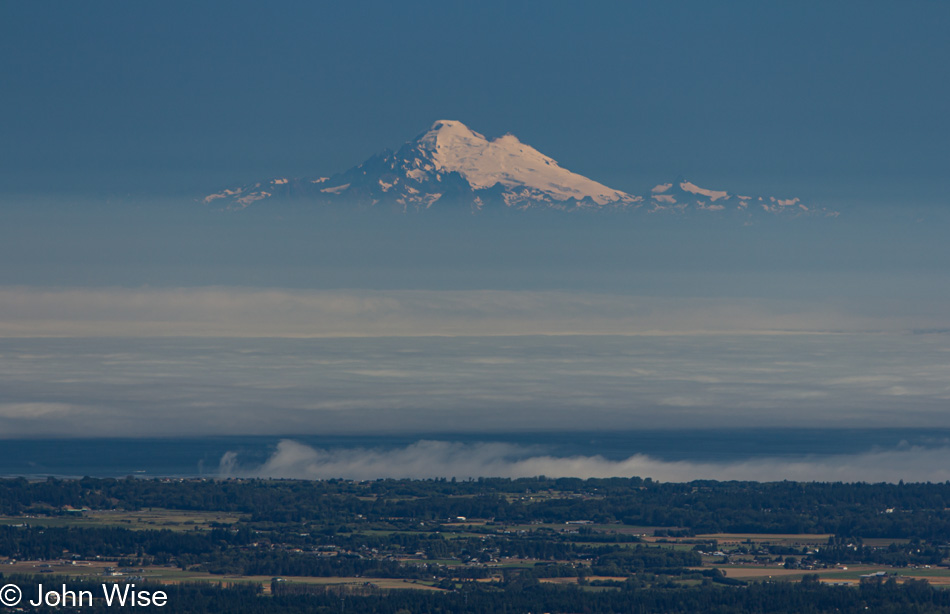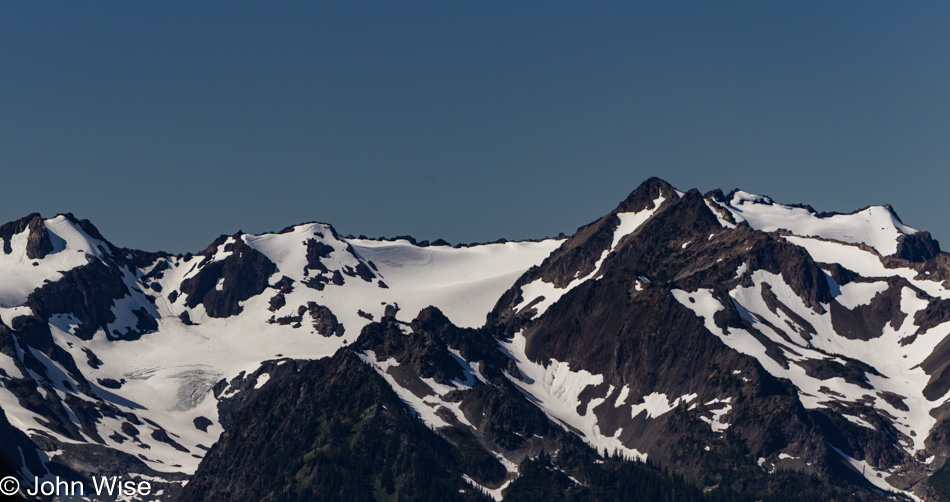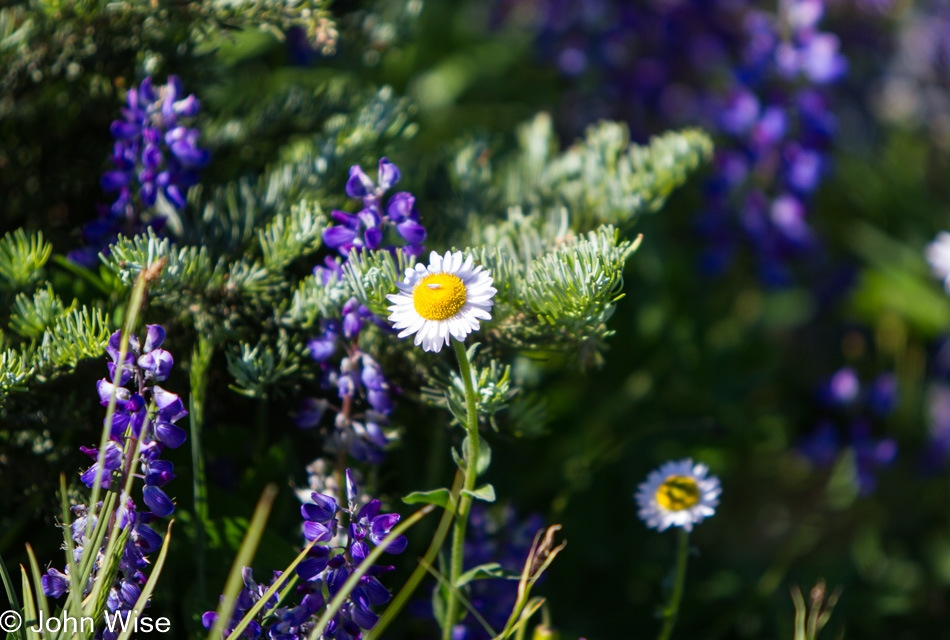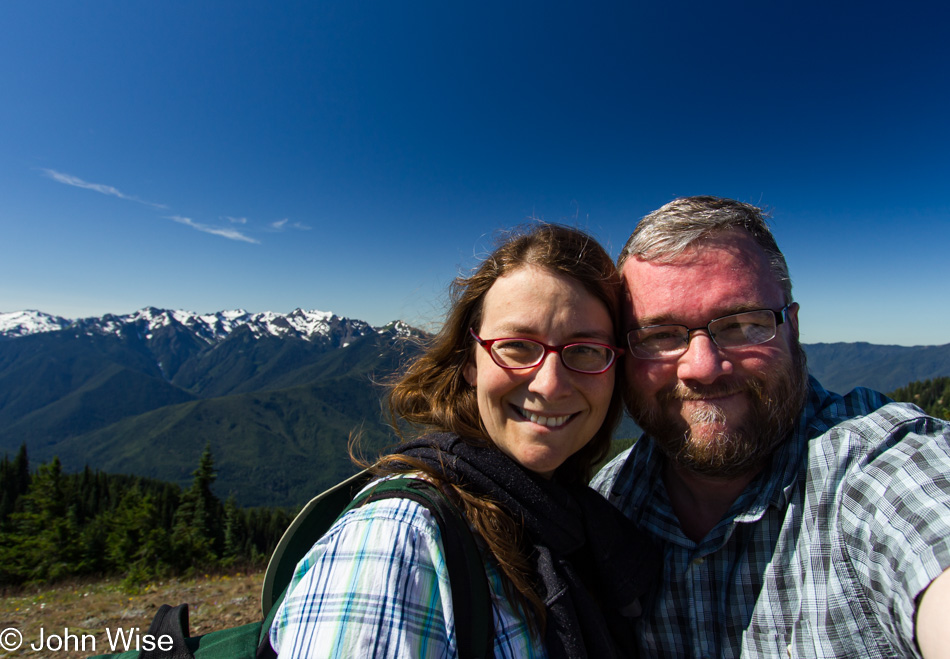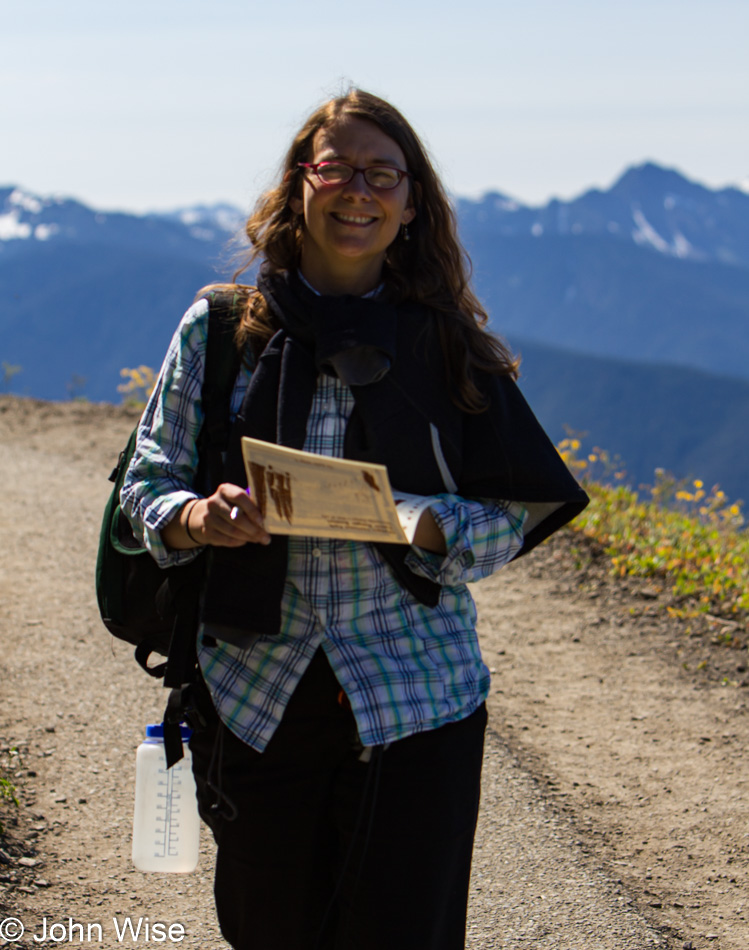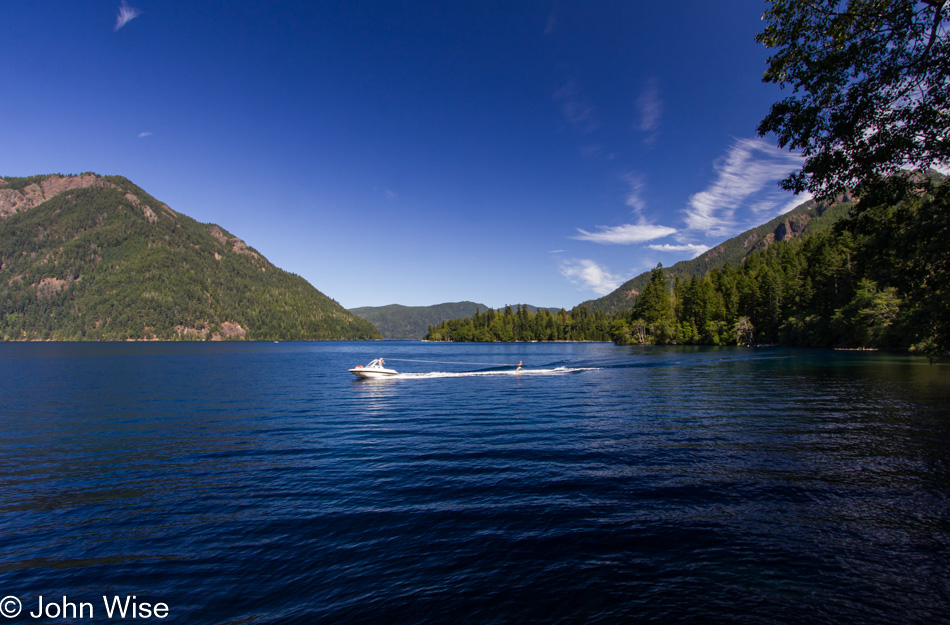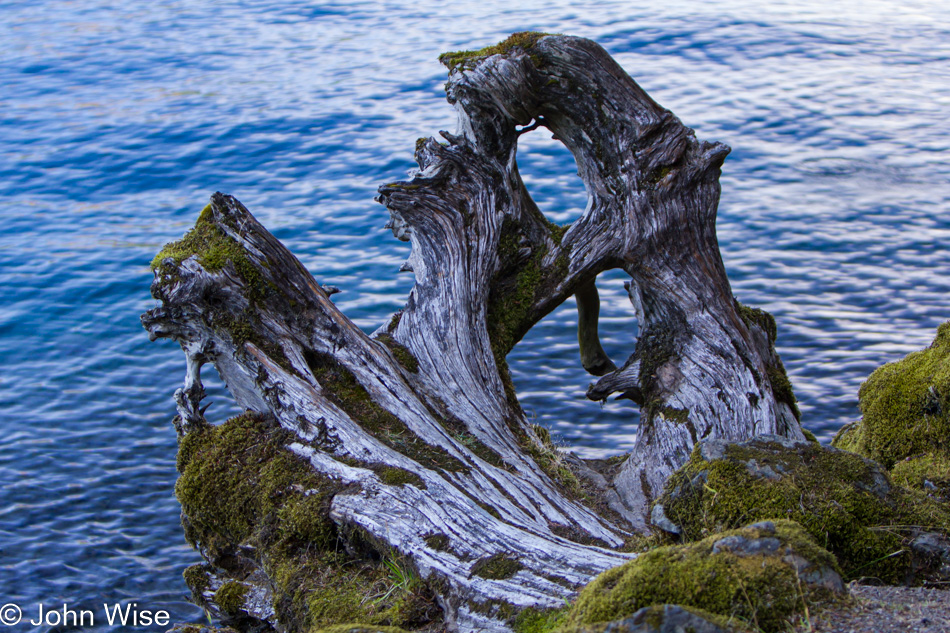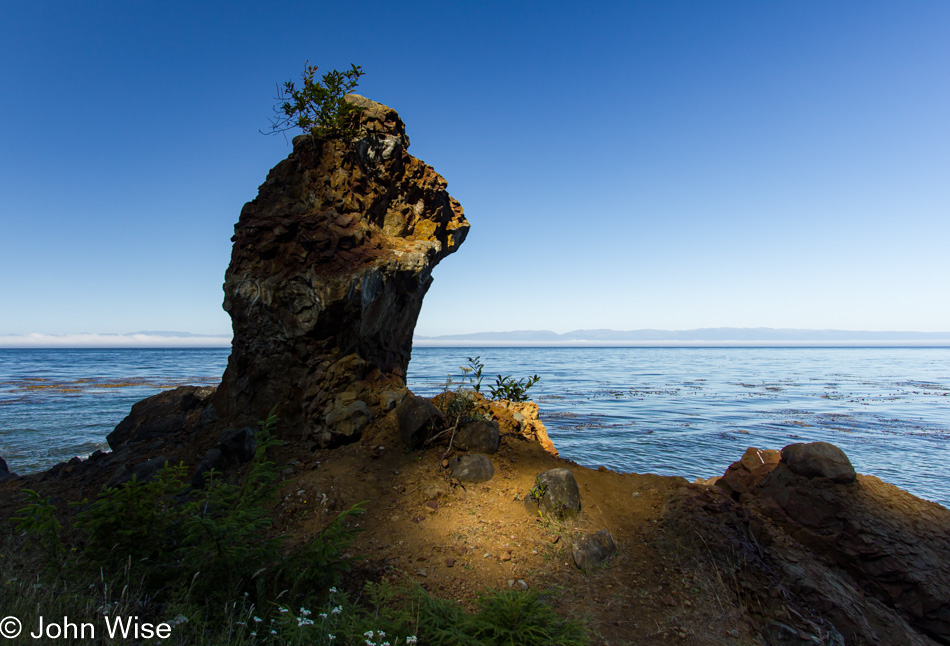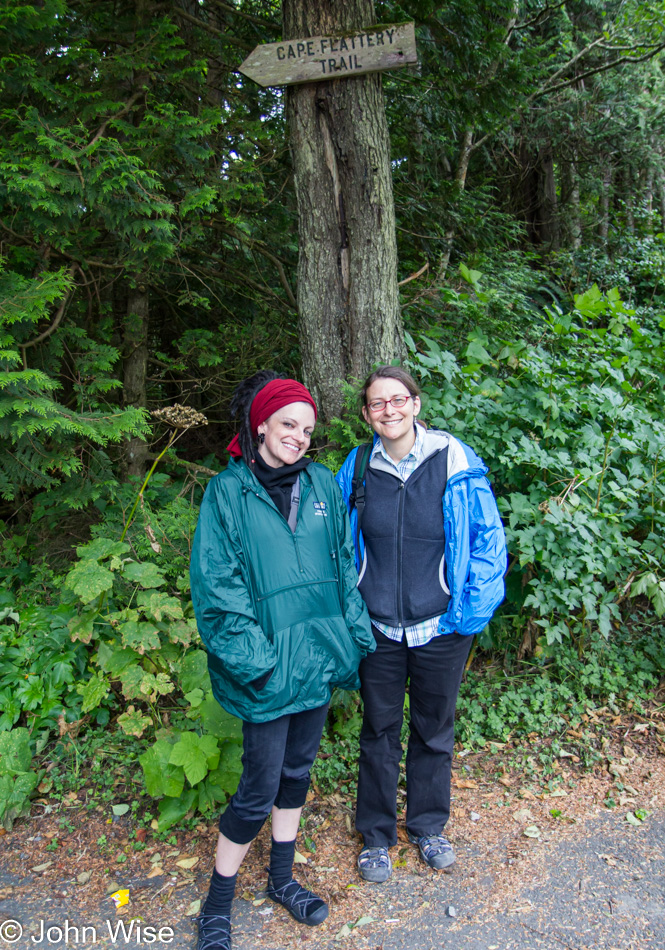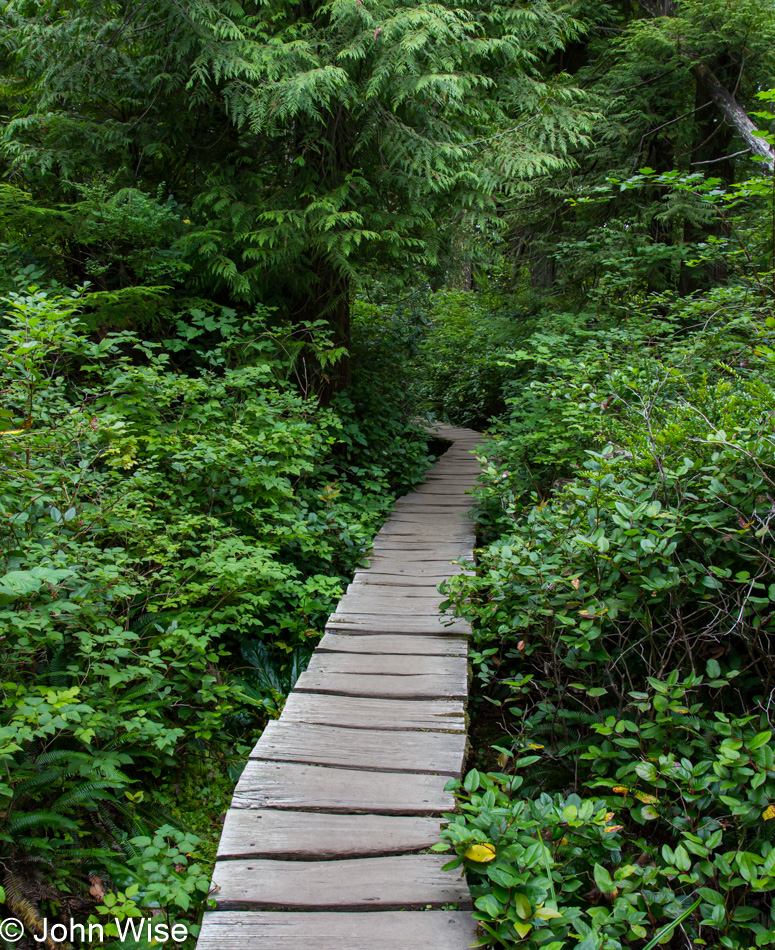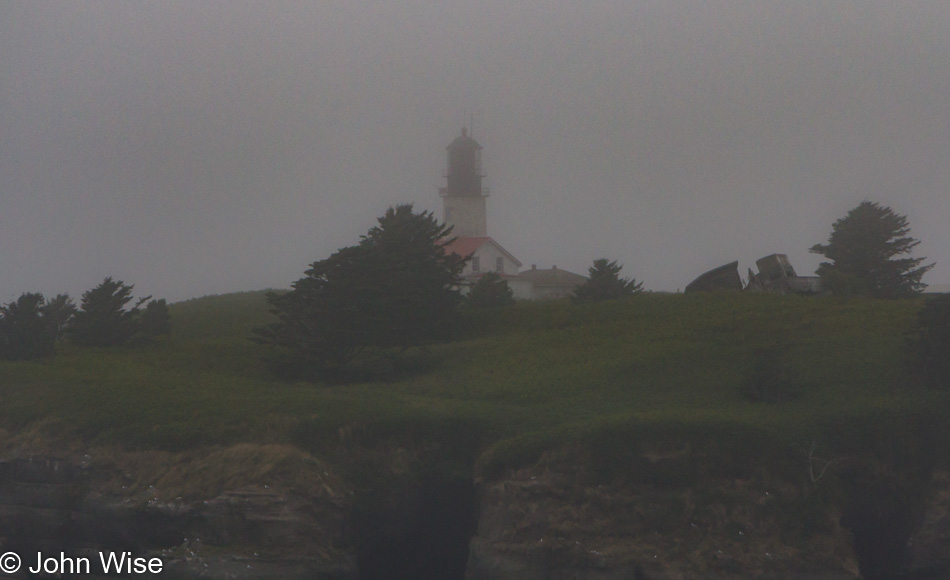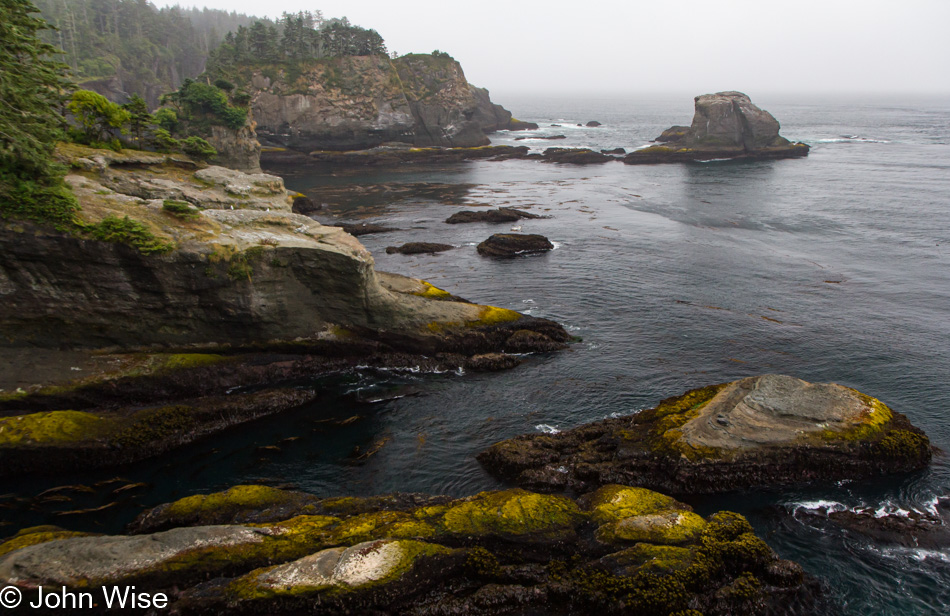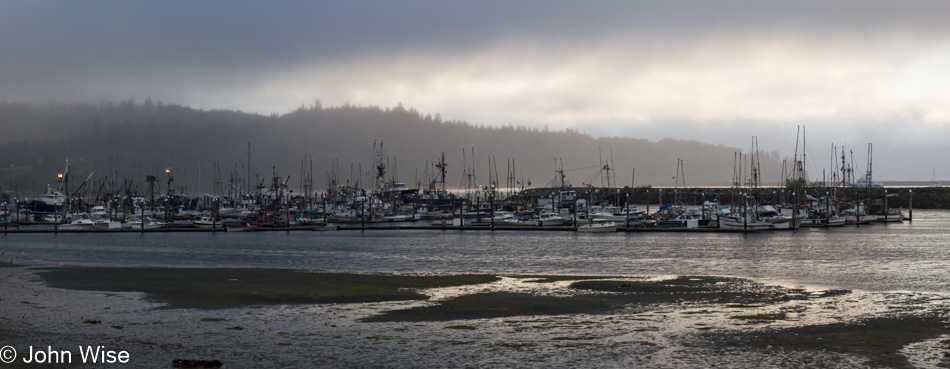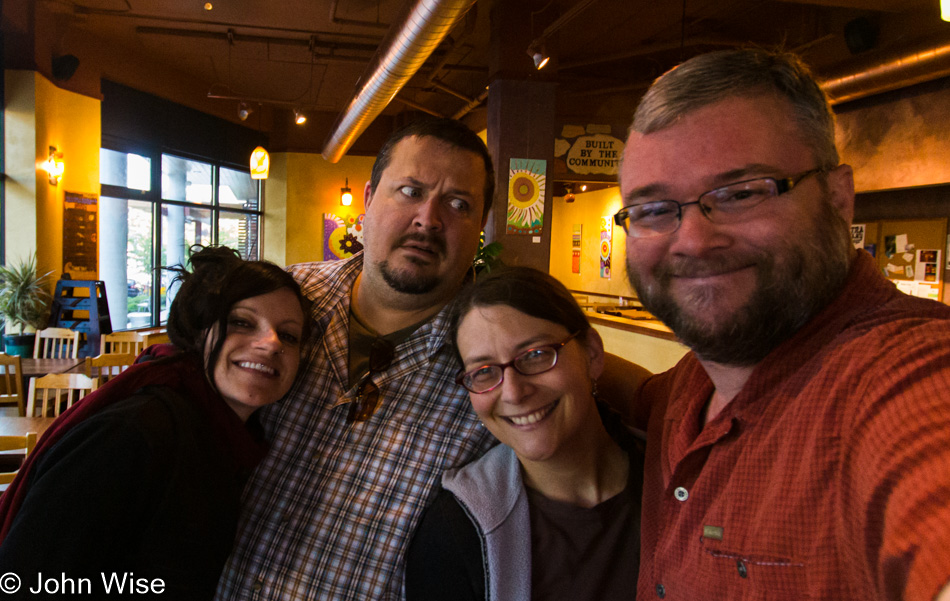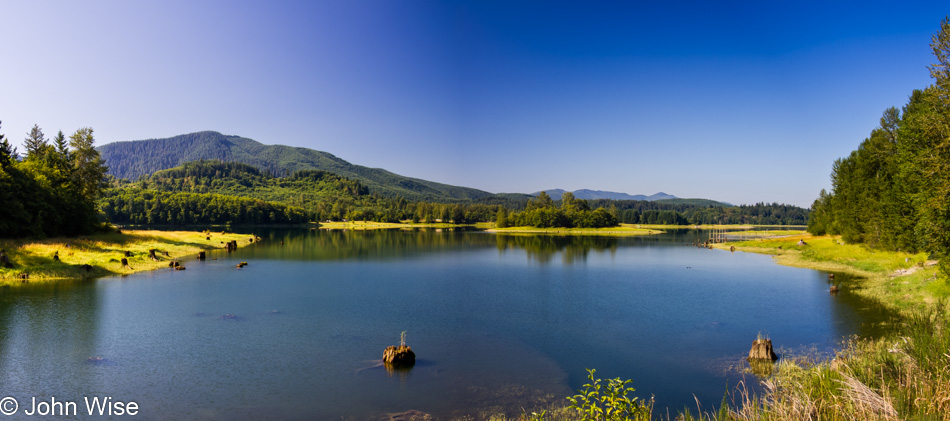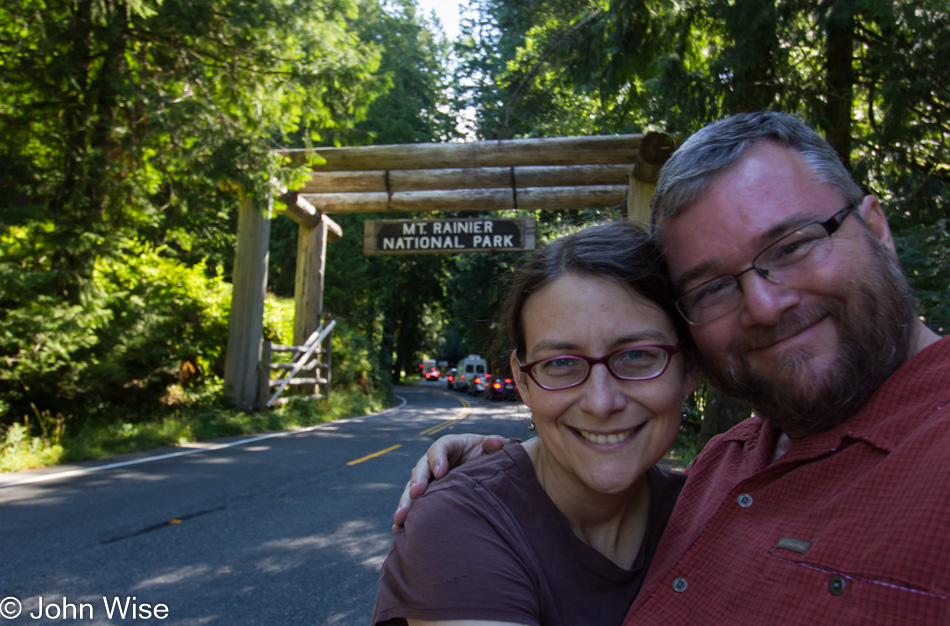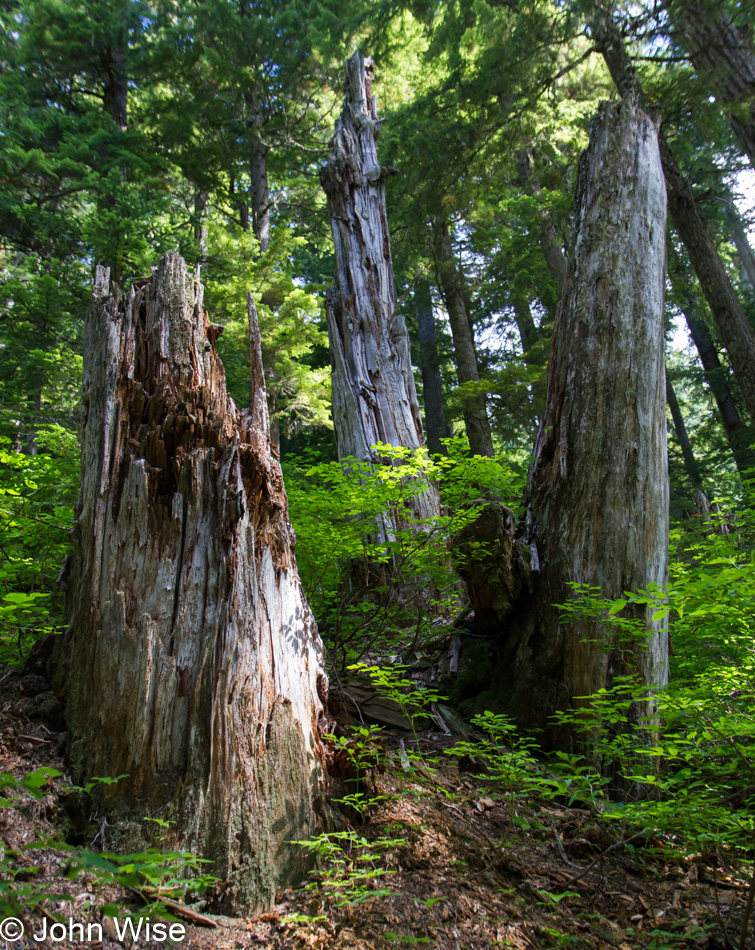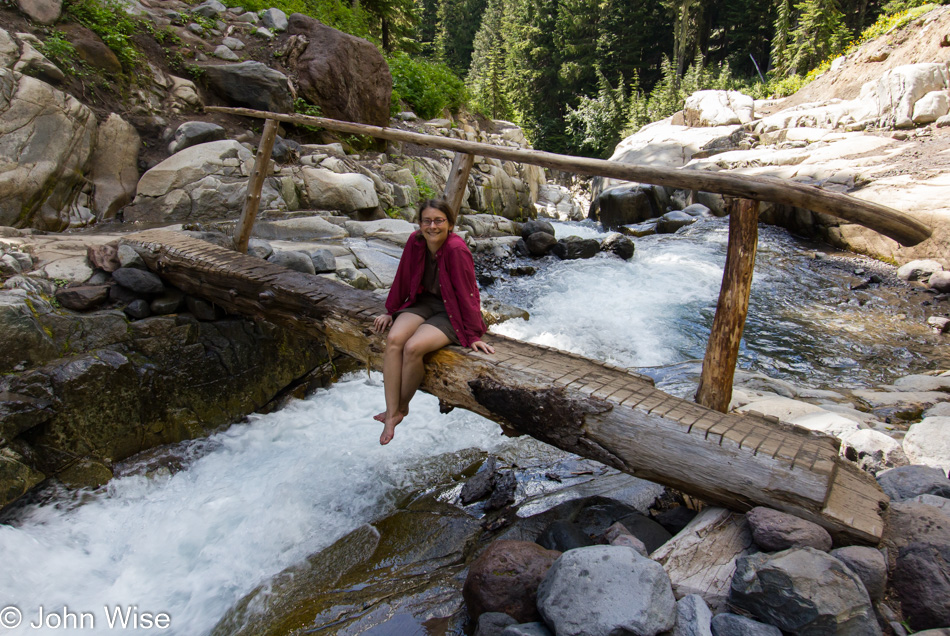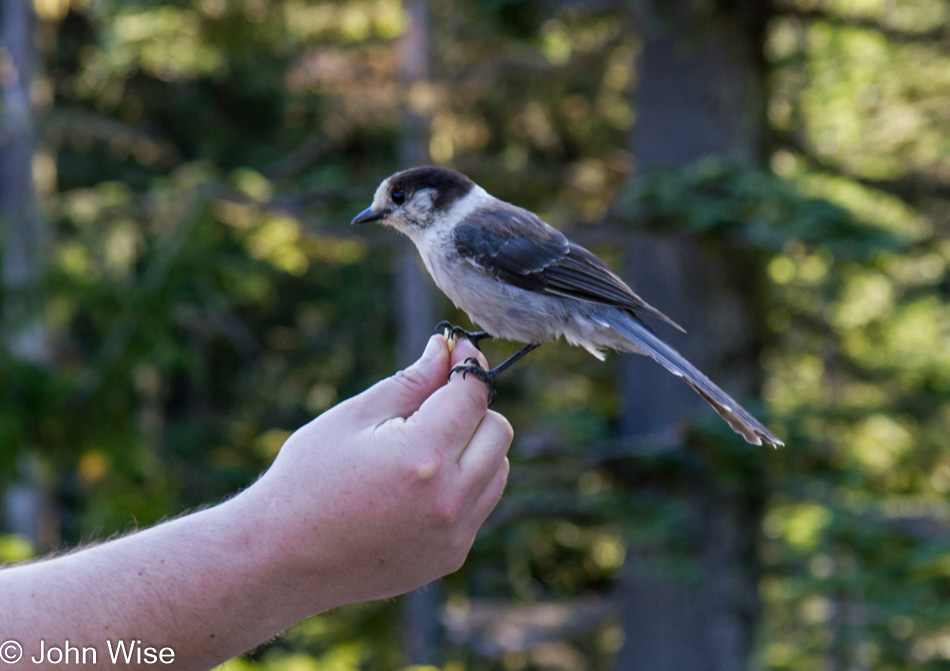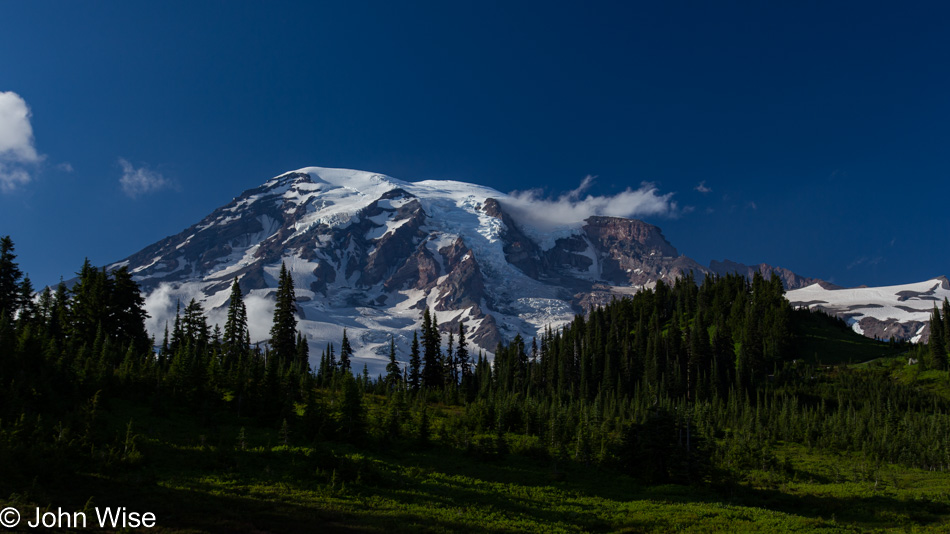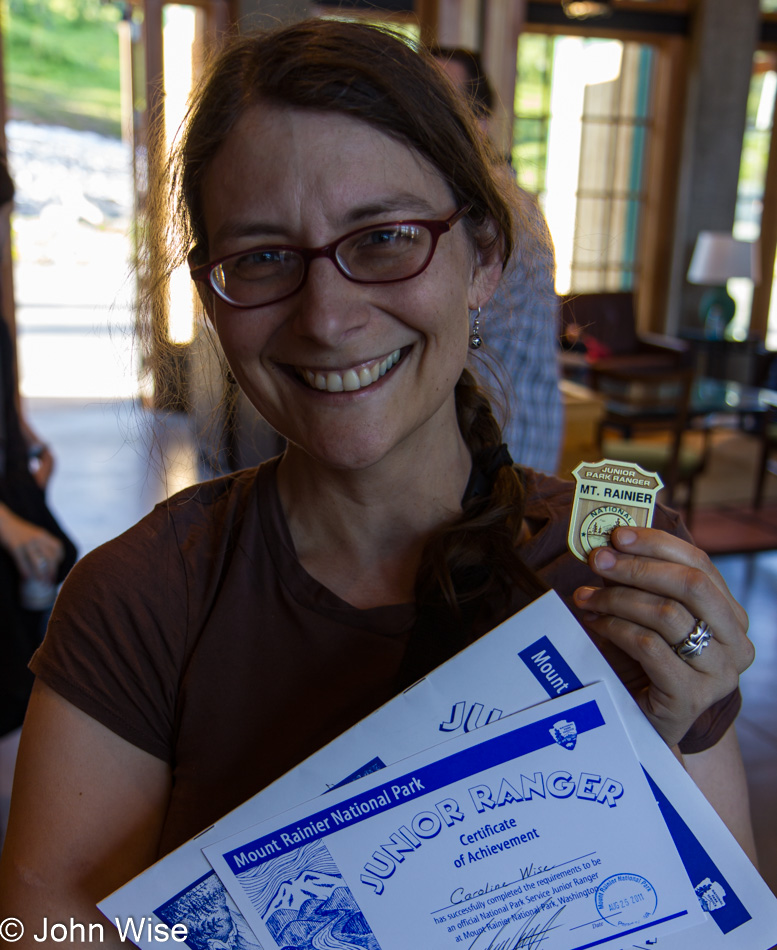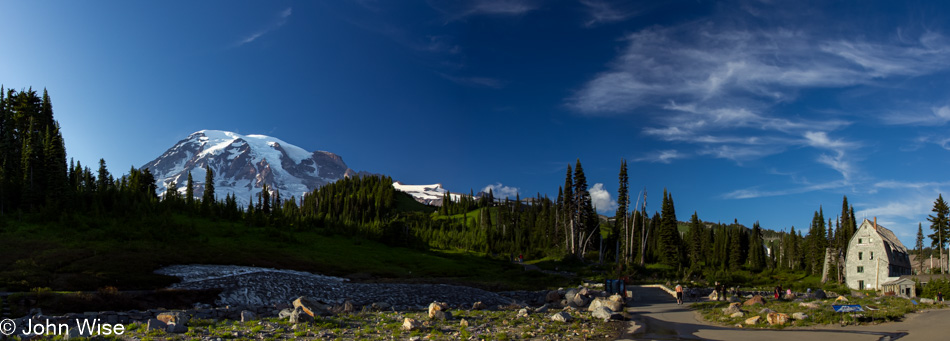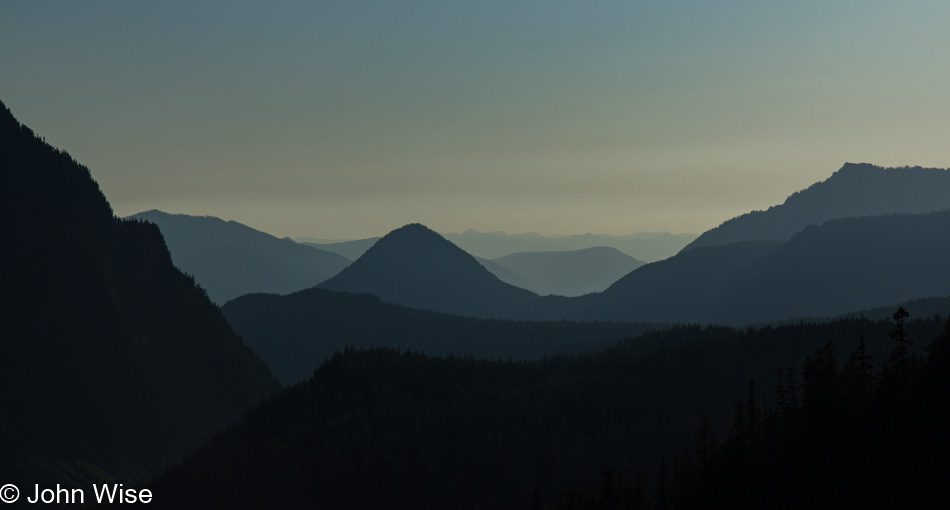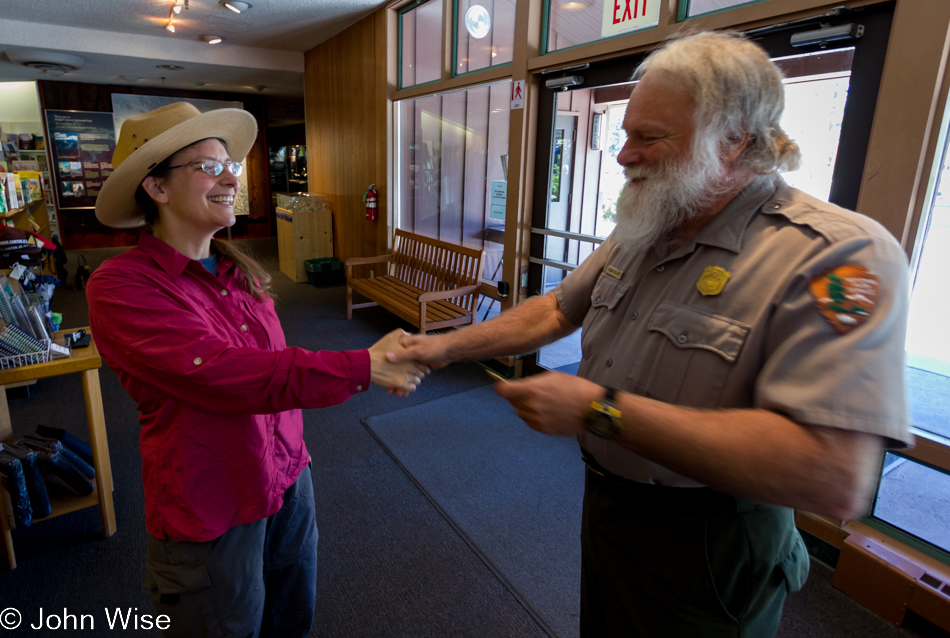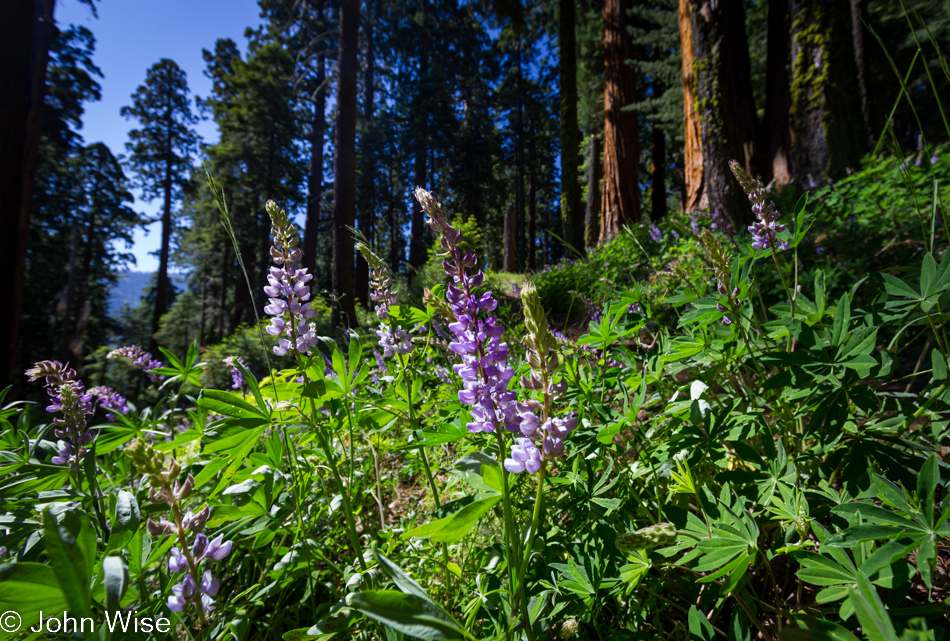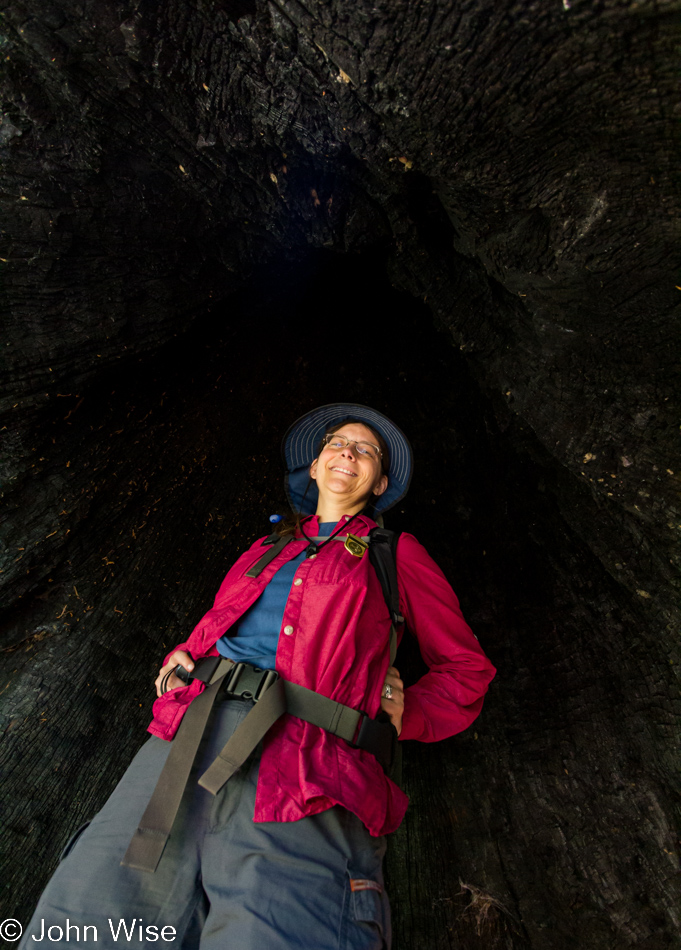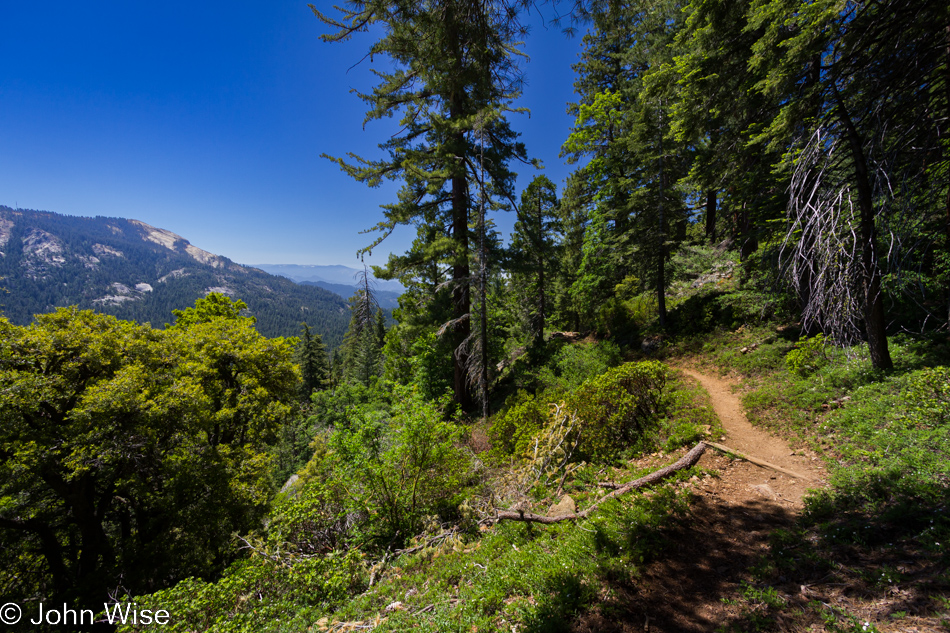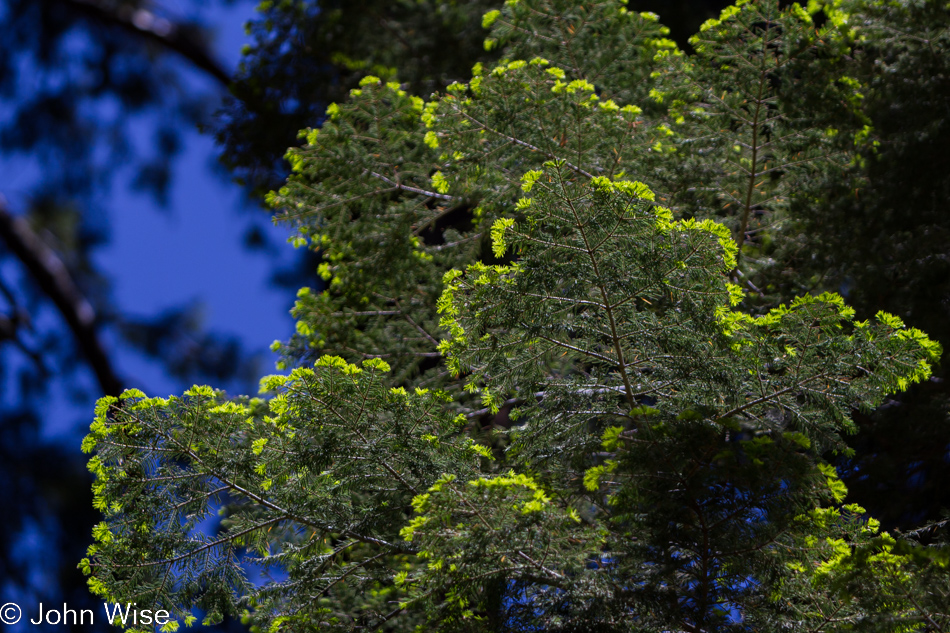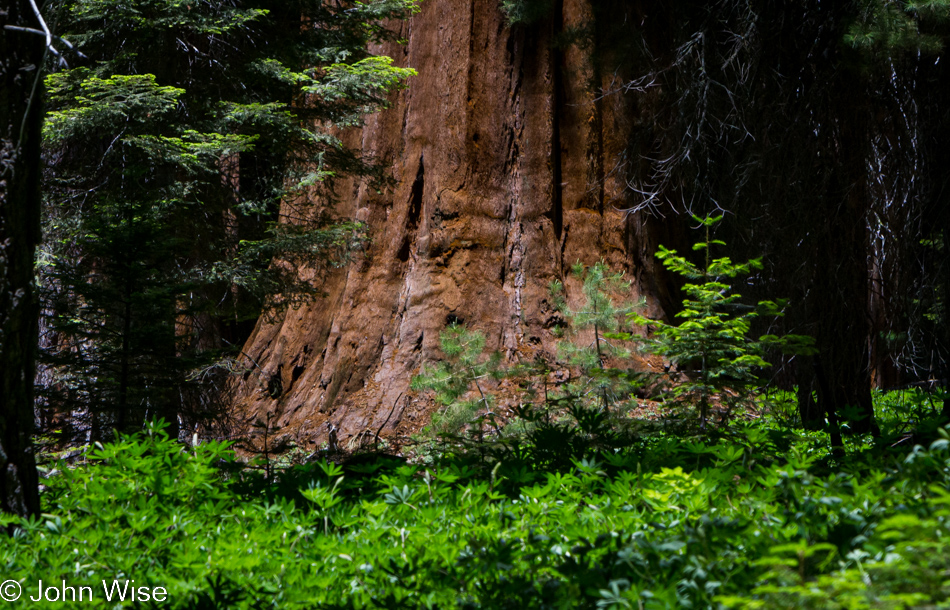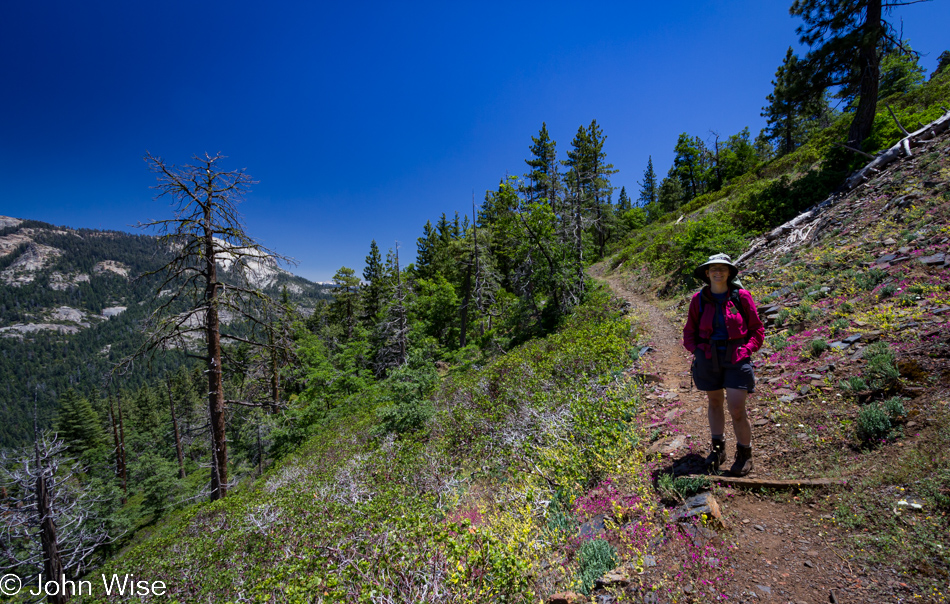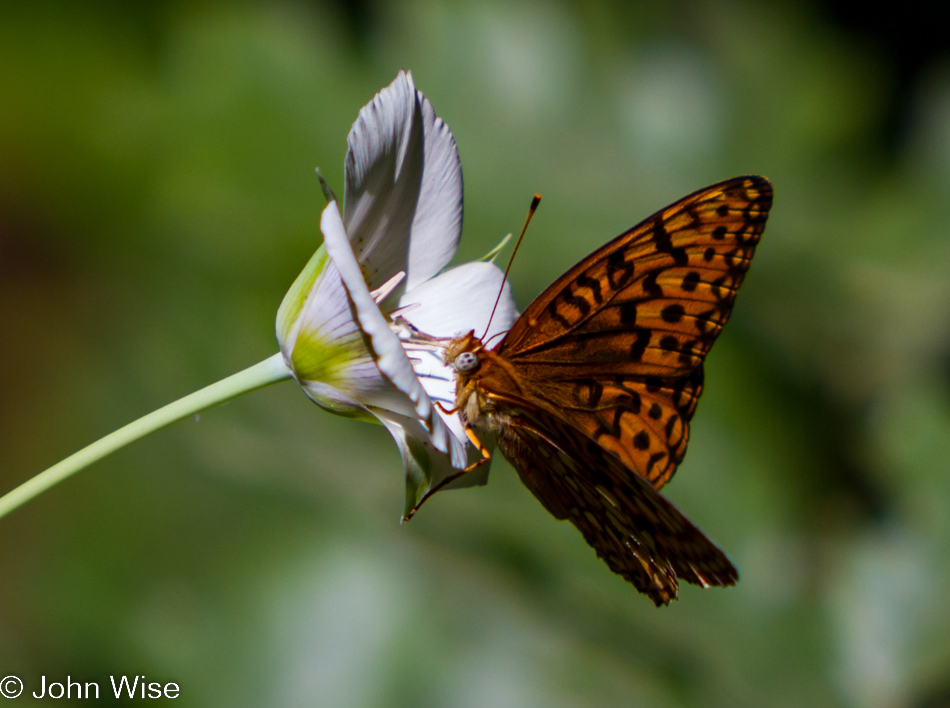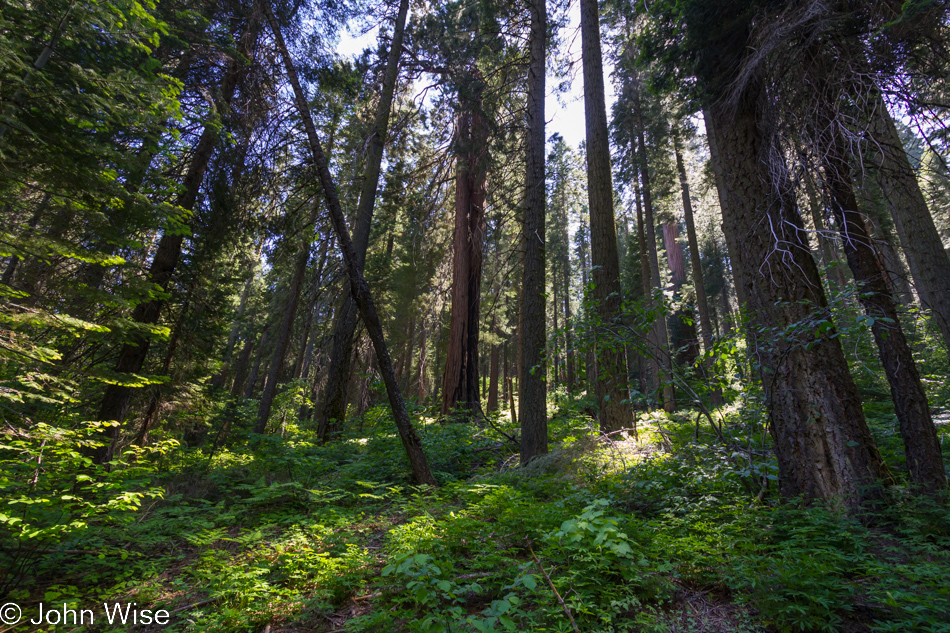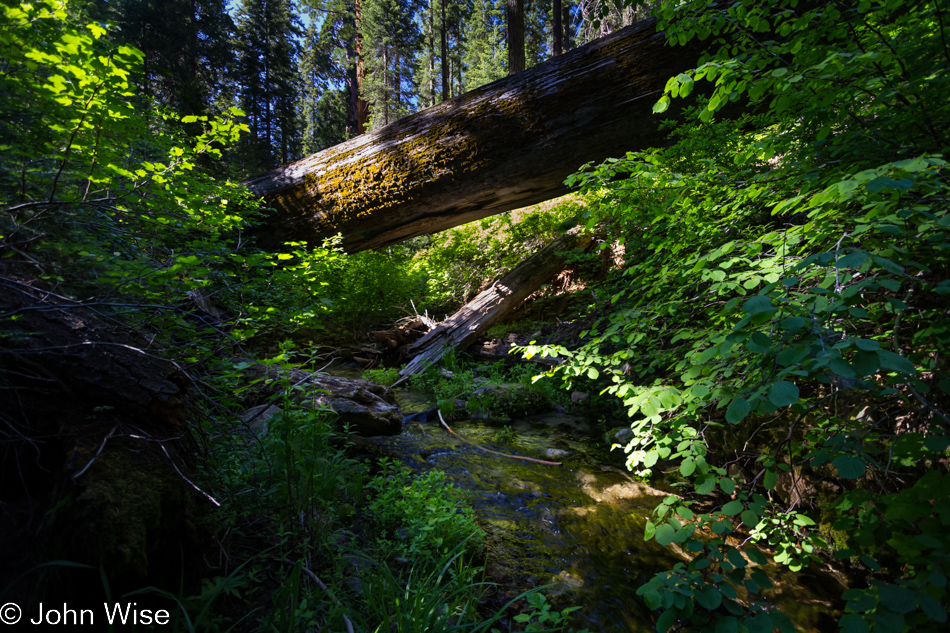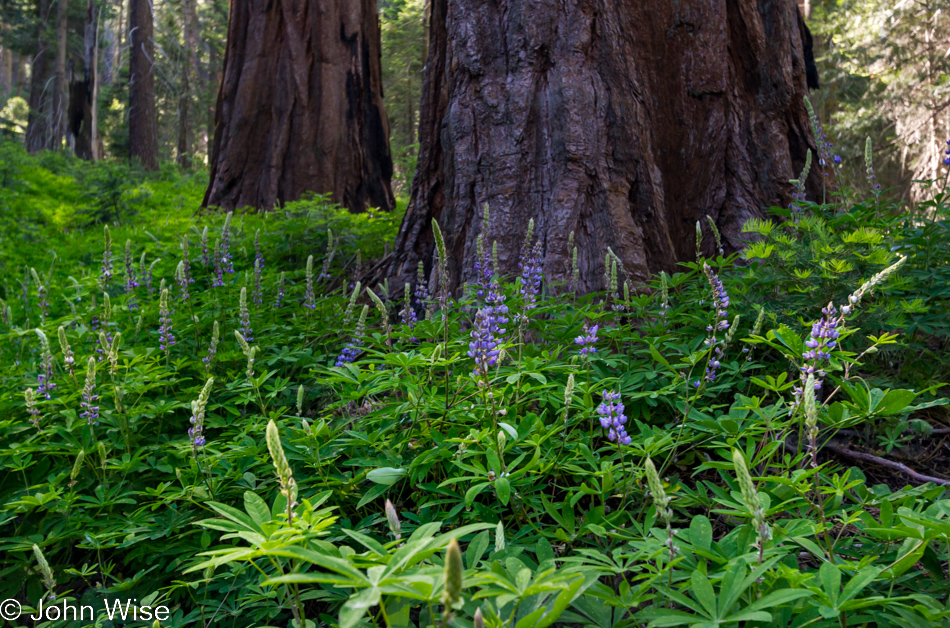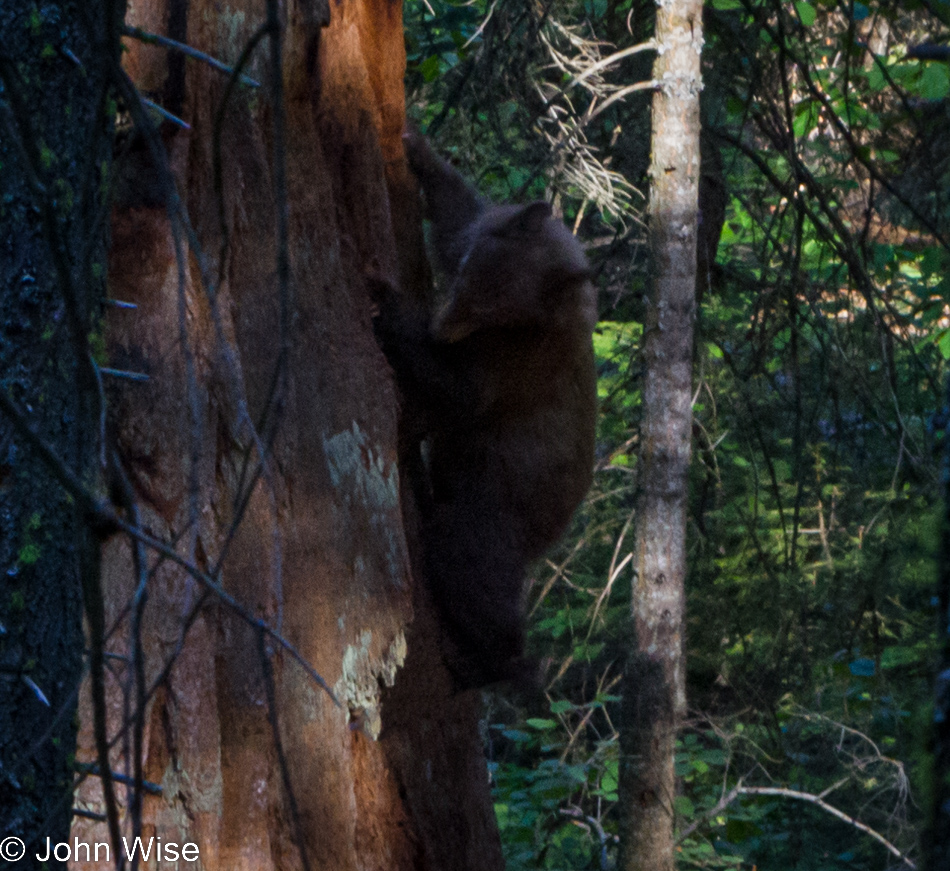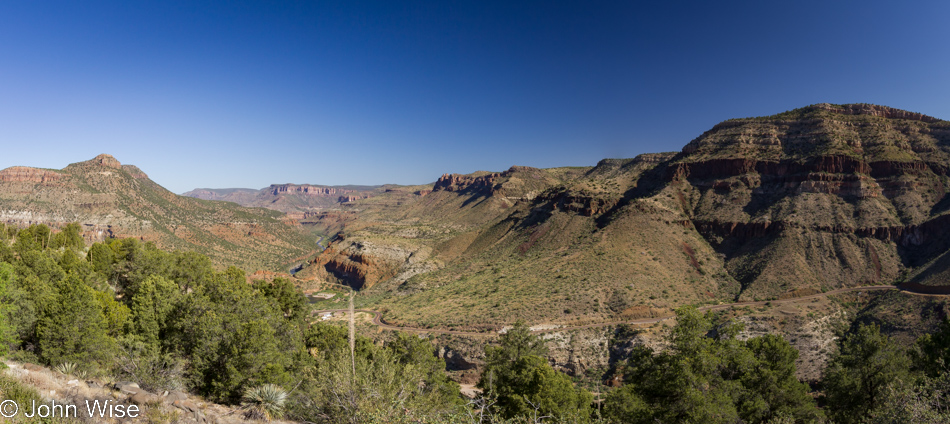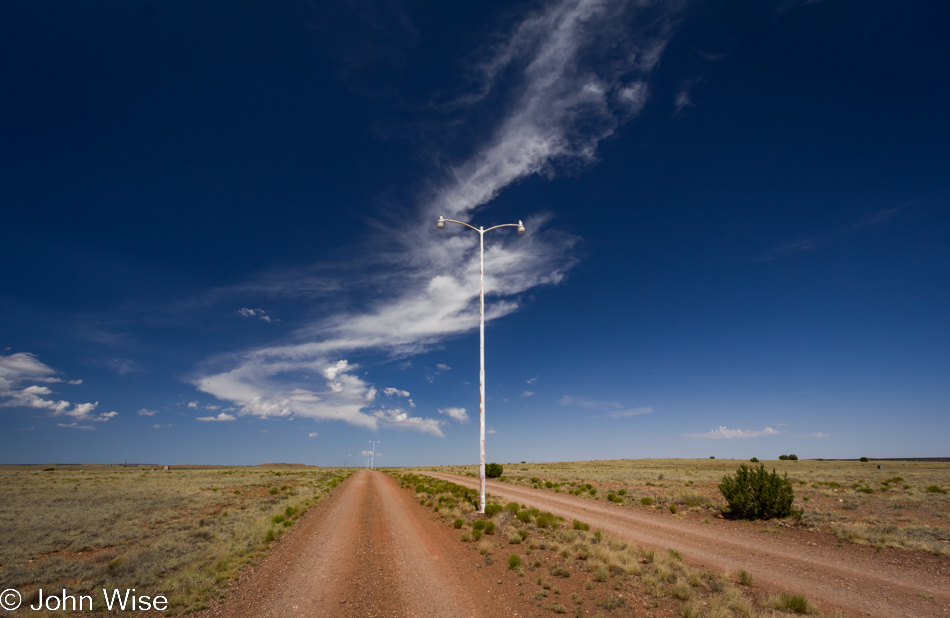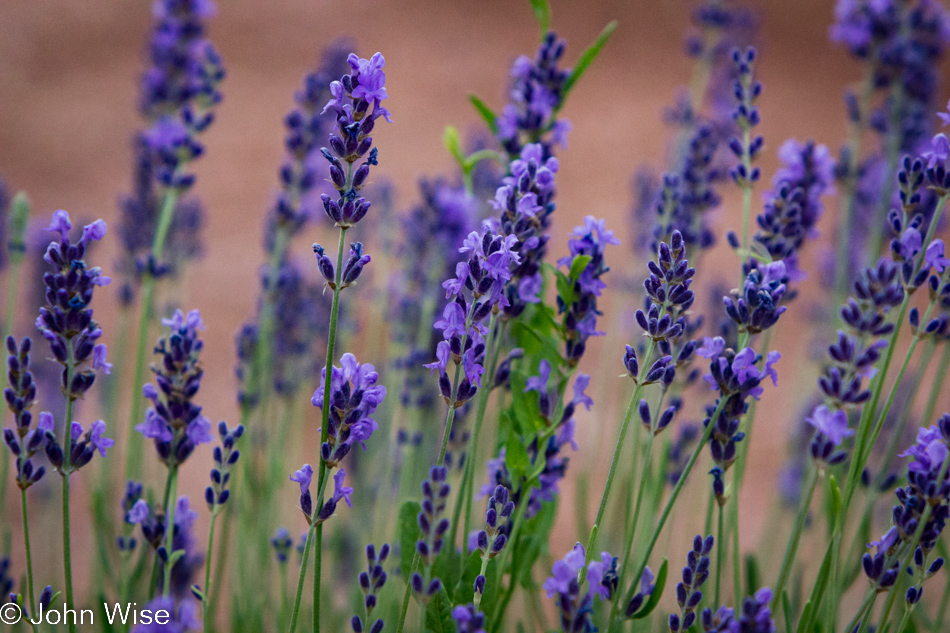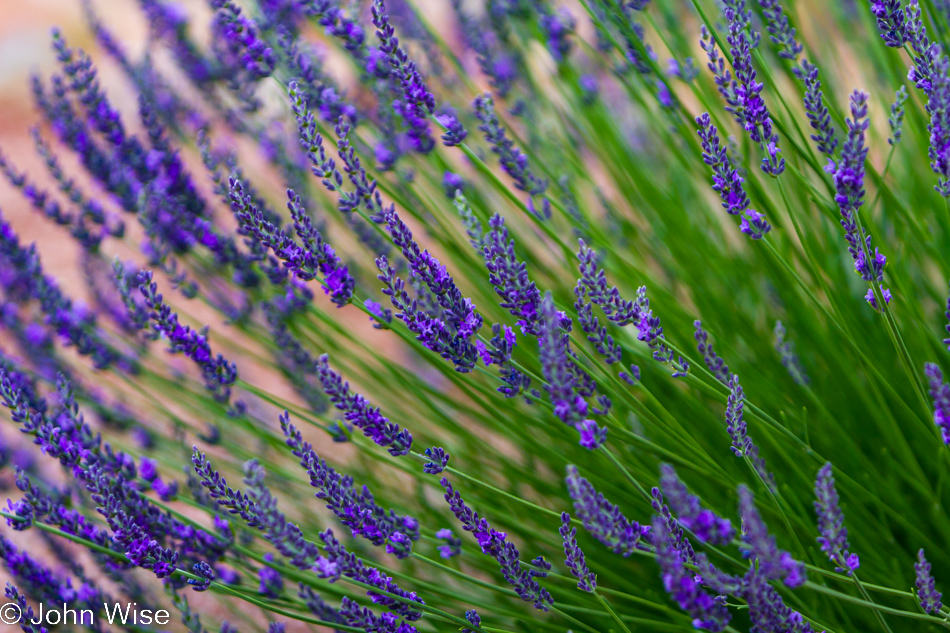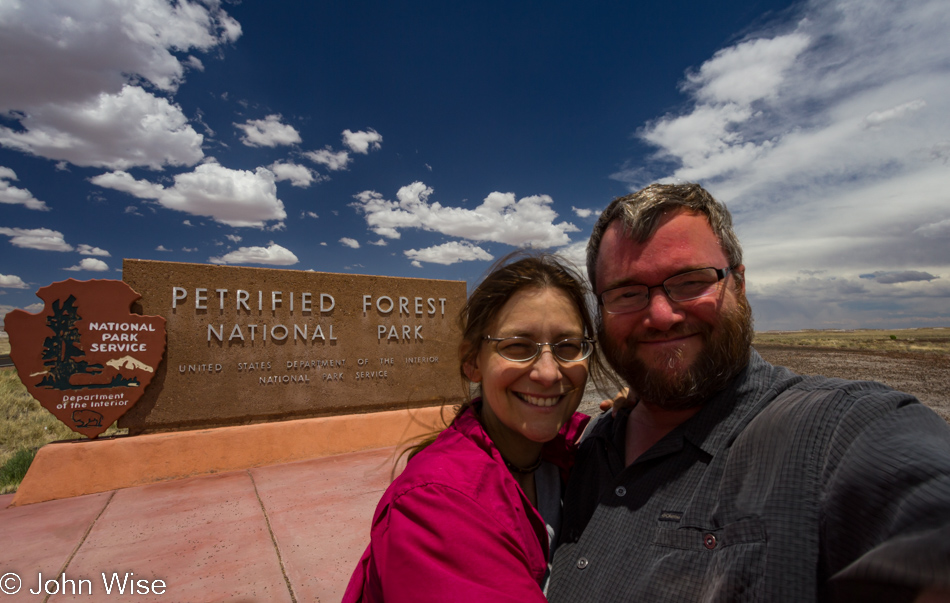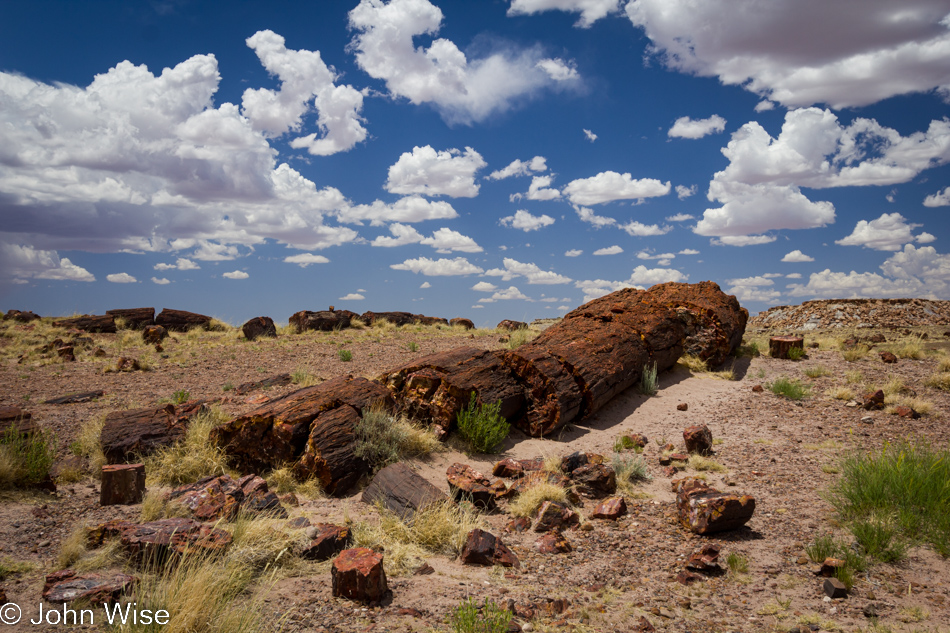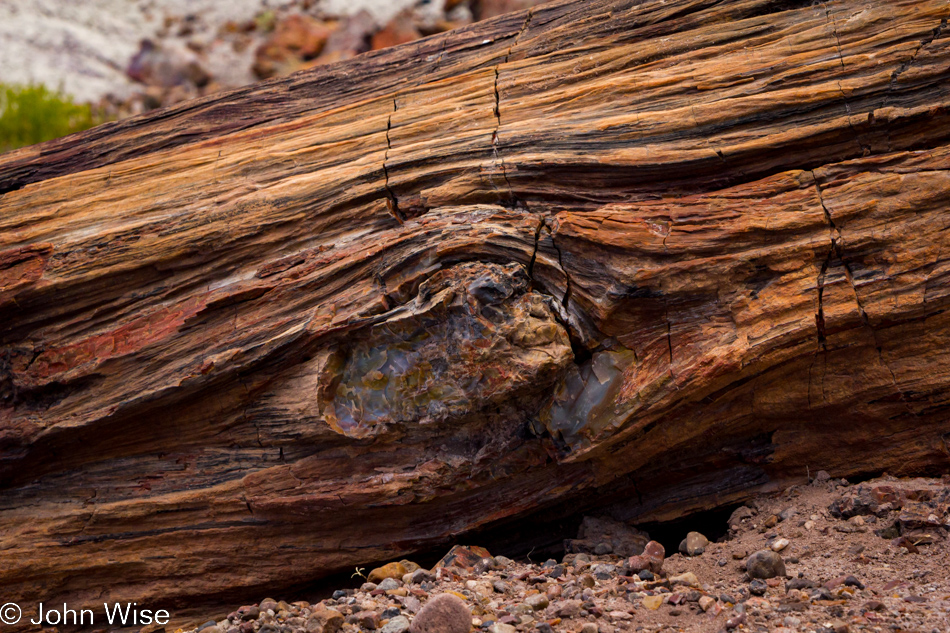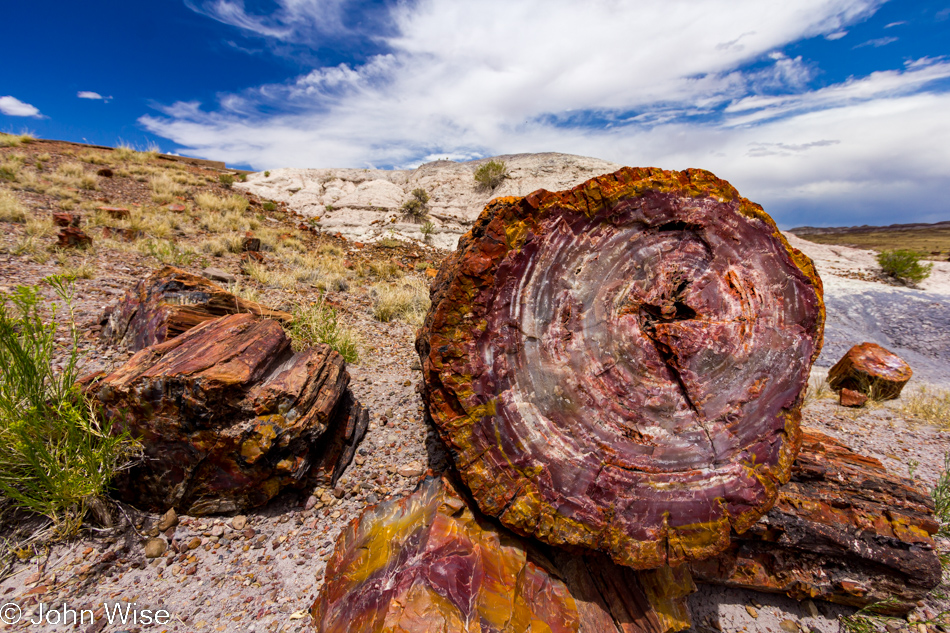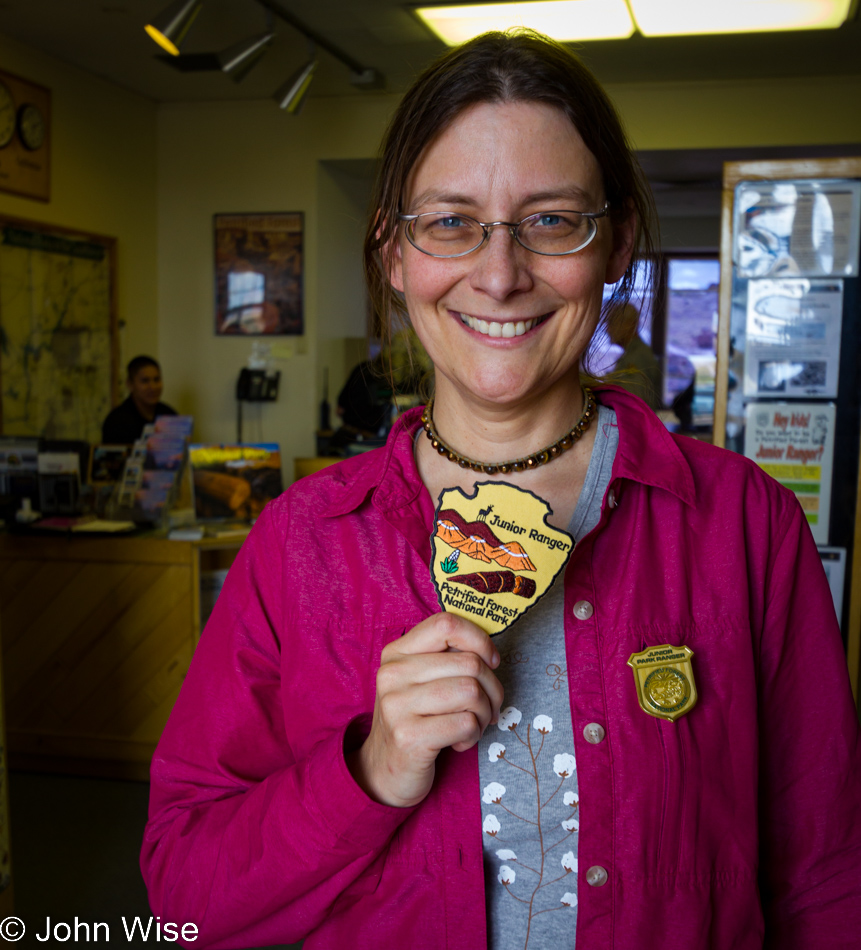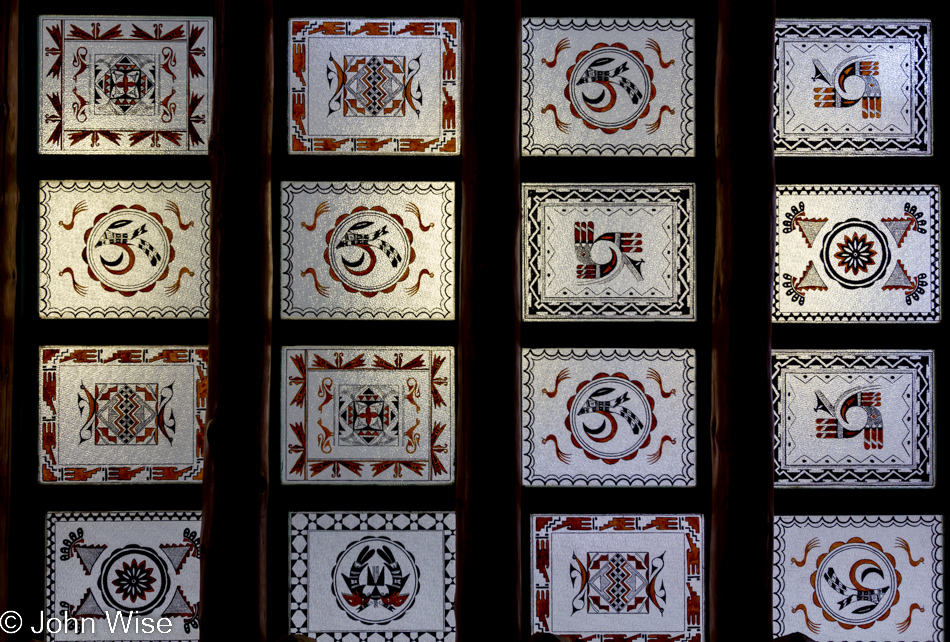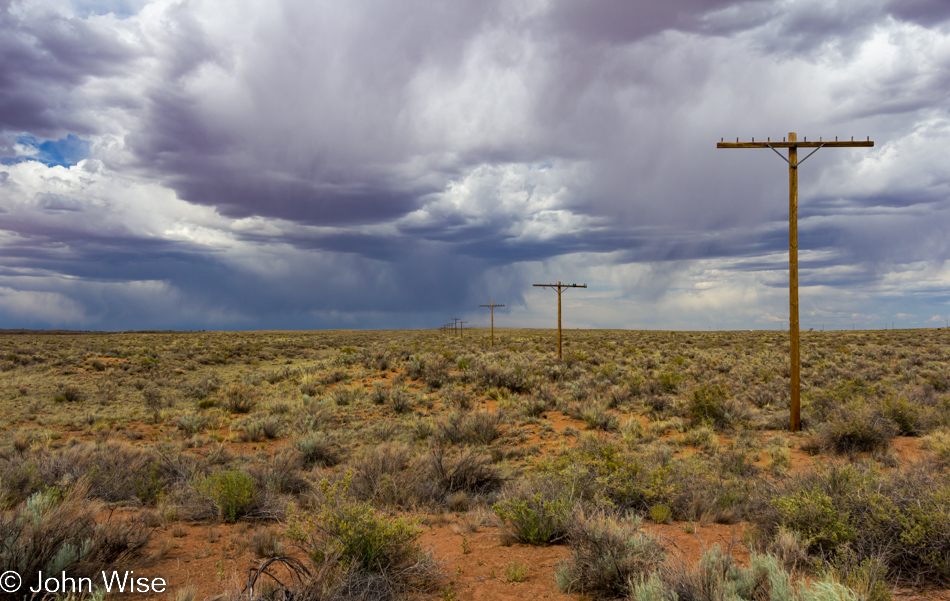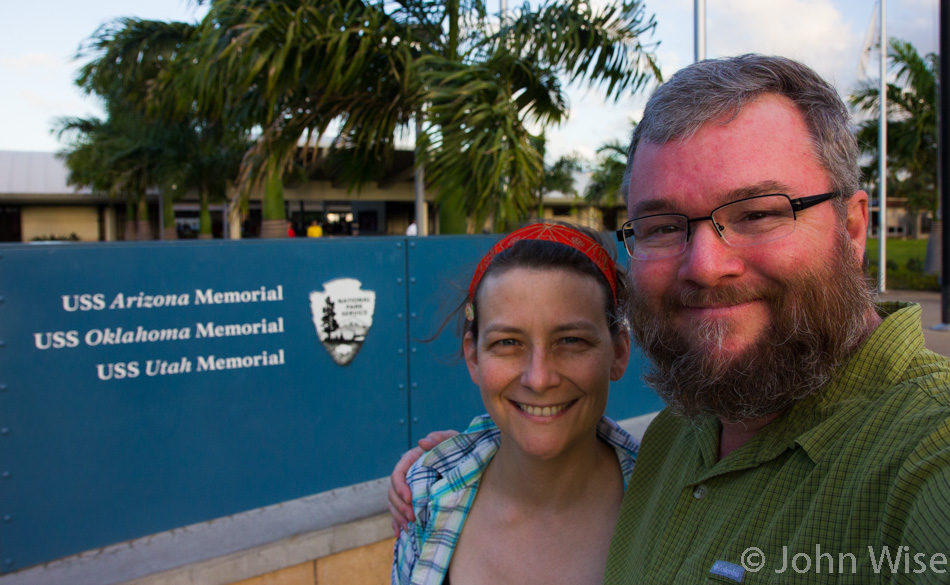
Up with an alarm and gone from the North Shore by 6:15 as we were heading back towards Honolulu for an 8:30 reservation. Should have visited Kalaupapa National Historic Park on Molokai back when we visited that island in 2006; then, after today, we would have visited all of the major National Parks in the Hawaiian islands. We are going to Pearl Harbor which is referred to officially as the World War II Valor in the Pacific National Monument. I suppose it’s okay that there are things that will be left undone out here in the middle of the Pacific that can draw us back for a third visit. So besides the former leper colony on Molokai, we still have to visit Lanai, hike the Kalalau Trail on the Napali Coast, swim with sea turtles (not really all that important), and go to an official luau at a resort – never mind, there is NO way we will ever do that – EVER!
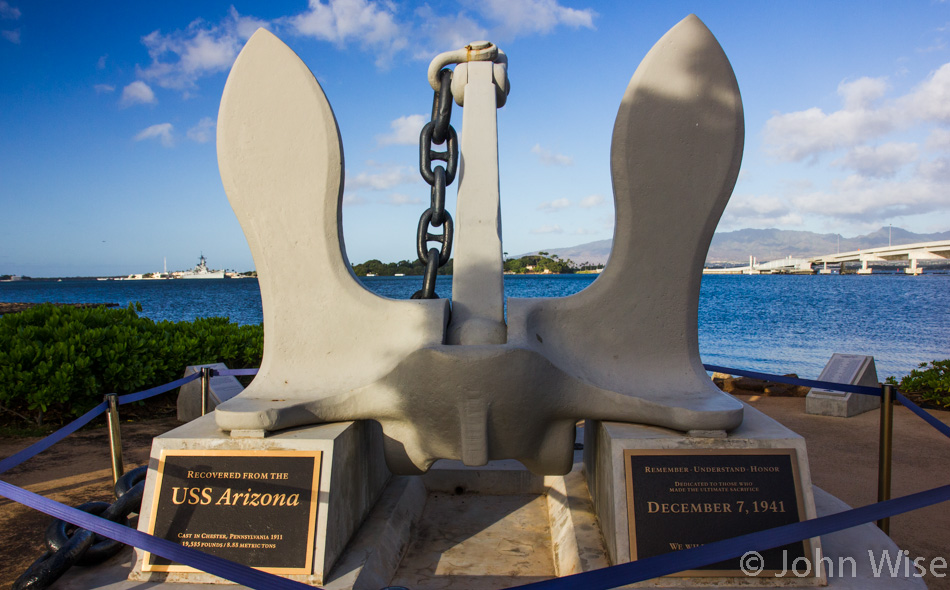
Before venturing further, Caroline has to stop at the information desk to collect her Junior Ranger booklet and get busy identifying what she needs to accomplish to be sworn in later as a Junior Ranger.
The USS Arizona, a pre-World War I “super-dreadnought” battleship destroyed during World War II, is the main attraction here at the memorial. At the time the ship was built, Arizona had just become the 48th state of America, hence the commemoration.
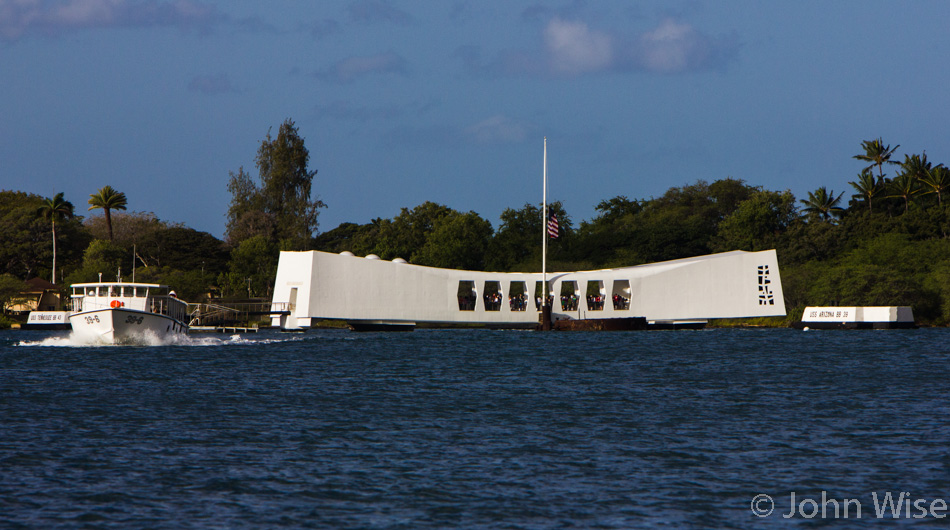
As anyone who is interested in visiting Pearl Harbor already likely knows, there’s a short naval boat ride out to the USS Arizona Memorial and the most iconic site here.
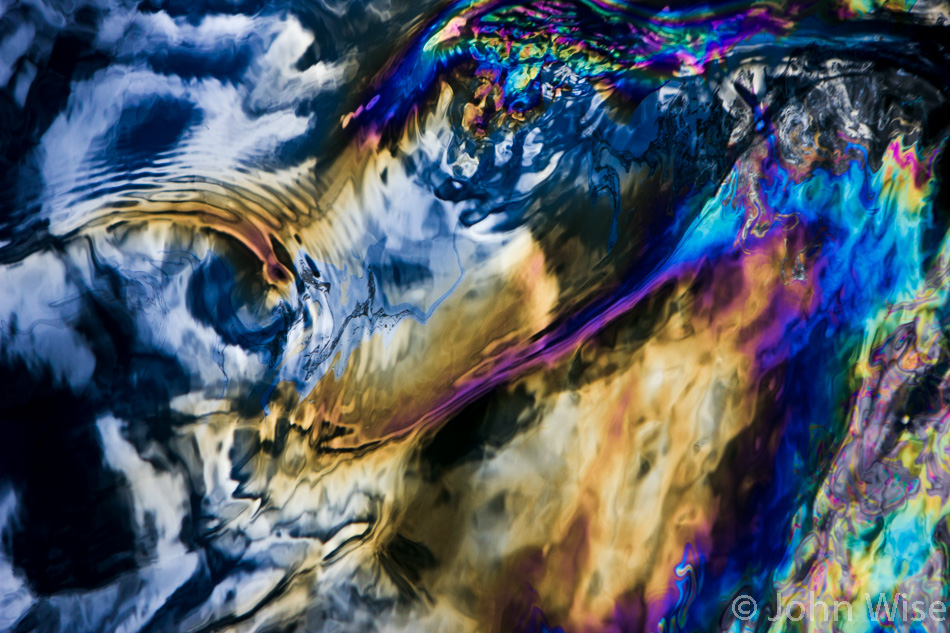
Almost 71 years to the day after the Japanese bombed this port and sank the USS Arizona, the oil still leaking from below is evident. In contrast to the tragedy, it is quite beautiful on the surface of the water.
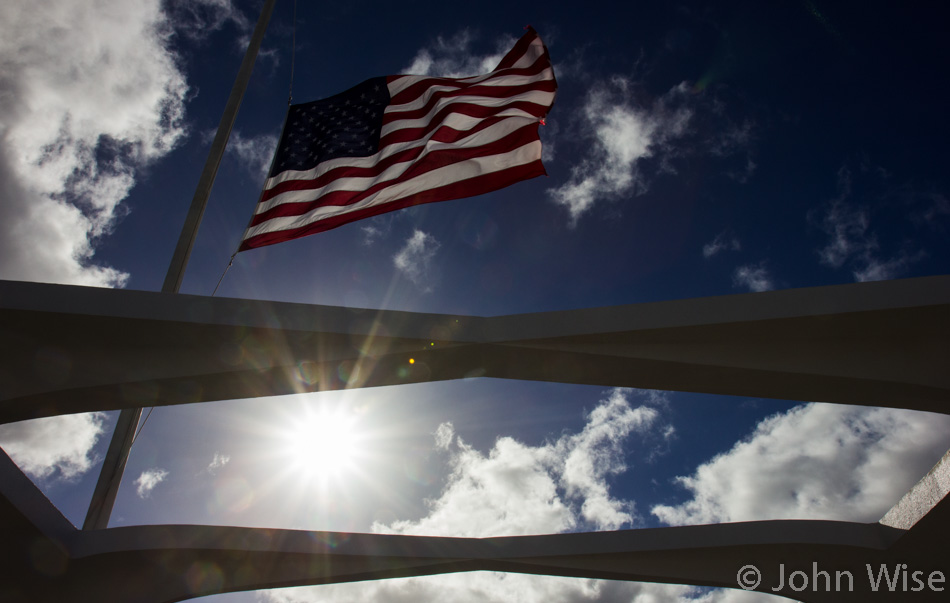
Fortunately, the visitors to this solemn place are acting accordingly and showing the respect that should always be afforded to locations where an act of barbarism took so many lives. This sense of physical presence of the tragedy is reminiscent of feelings had while visiting Dachau, Manzanar Japanese Internment Camp, Custer’s Last Stand, Gettysburg, and the Eastern State Penitentiary in Philadelphia.
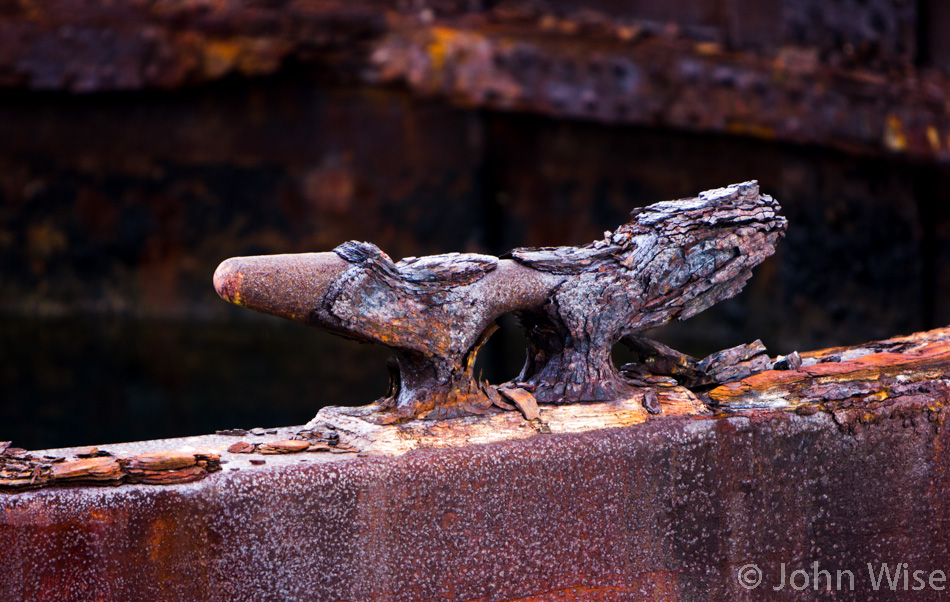
Usually, the place of a human death doesn’t immediately become a memorial. The evidence is removed from the place where it happened, as human remains are taken to a cemetery or to cremation. Here, we must confront that the rusting hulk of a vessel just below us still holds the remains of over 950 soldiers who died aboard this craft. They were not able to be brought by a family member to a proper resting place, but then again, what is more appropriate than using the site of a grievous act of war as a reminder of our transgressions that take so many lives?

A place of contrasts where the beauty of Hawaii is also the site of the beginning of America’s entering World War II, a harbor where the tropical setting of palm trees and the ocean is also the setting for a mass grave, where dark clouds loom over paradise.
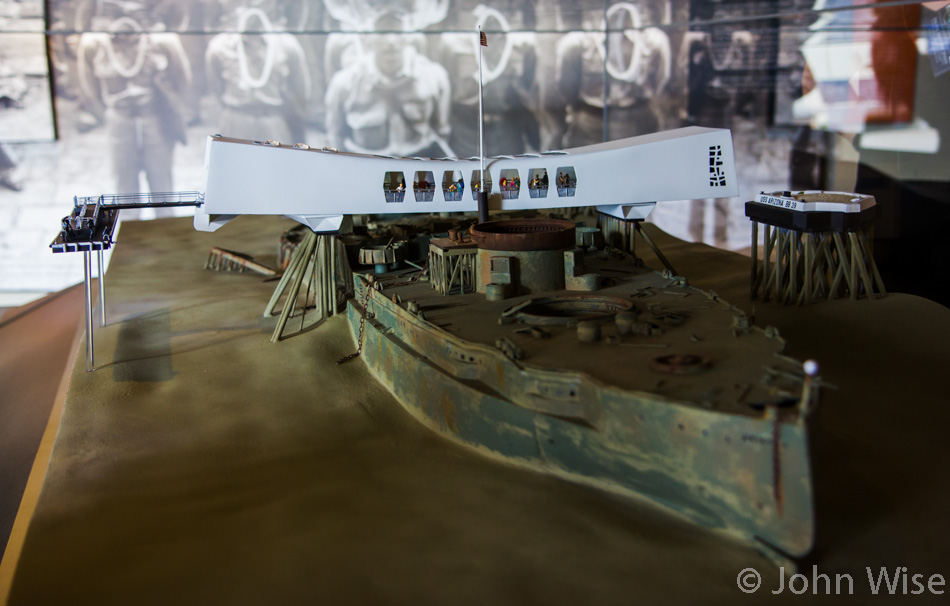
We see so little of the battleship standing out of the water, it’s difficult to imagine that there is so much ship just below us, but this model demonstrates the scale of what is just out of sight.
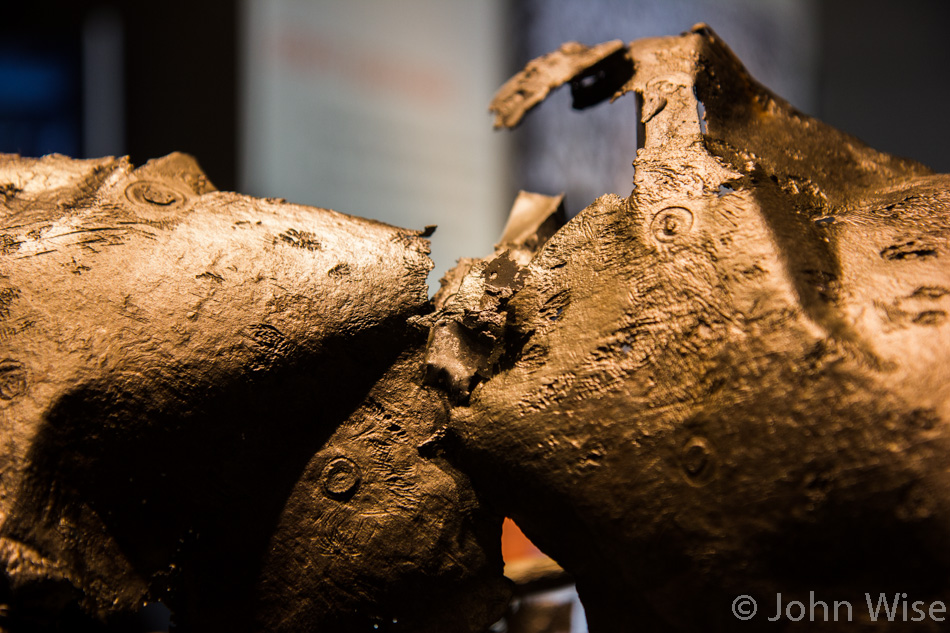
The museum back on the mainland has a great exhibit that goes into the details surrounding that fateful day. This piece of heavy steel shows what the force of the bombs was doing as they unceremoniously shredded into reality and tore at the fabric of our sense of peace.
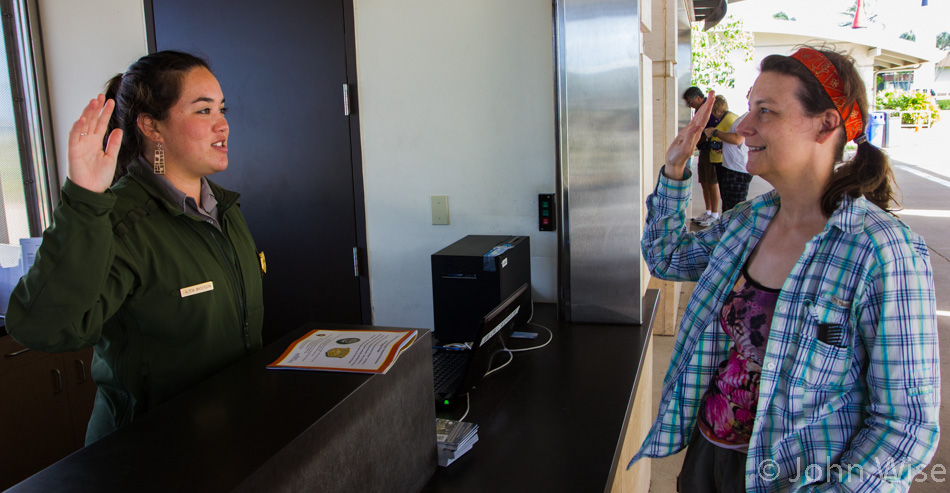
Like all National Park facilities, there’s a Junior Ranger program for those interested in learning more about the history and importance of a location while gaining a better understanding of being a steward of America’s most important lands and facilities. Caroline is collecting yet another nearly perfect score as she does her best in our rather brief visits to finish not just the requirements for becoming a Junior Ranger but to do all of the exercises and learn just a little bit more.
We left Pearl Harbor now hungry as our breakfast of bananas and pineapple was wearing thin. I’d already scoped that the Highway Inn might be a lunchtime winner, so we headed over to Waipahu and, in an unassuming strip mall, started our wait. Twenty minutes later, we had a small table and were trying to figure out what to eat. Considering this might be the first and last chance to ever visit this eatery, we got indulgent and started with an appetizer of Kahlua pork and purple yam in a quesadilla topped with mango salsa. Already, the meal was super yum squared. Next up was the laulau combo with pork and a side of squid lū’au. Determined to gain a wide sampling of their dishes, we ordered some of the made-to-order tako poke. In case you don’t know, or if Caroline is reading this to me when I’m old and in the throes of dementia, tako is the Japanese word for octopus. This dish is served with a creamy wasabi sauce, onion, and ginger miso, and it alone should have qualified the Highway Inn as great, but there was more. Haupia, oh my god, this was the greatest haupia we’ve yet had! And while it is just coconut pudding, it was the best coconut pudding.

Seeing that we were already in the Honolulu area, we decided to head over to the Bishop Museum, where Hawaiian and Polynesian history is on display. Our introduction to the facility was right here in the main hall and while difficult to see down on the ground floor, there was a men’s choir singing Hawaiian songs and lending a terrific start to our visit.
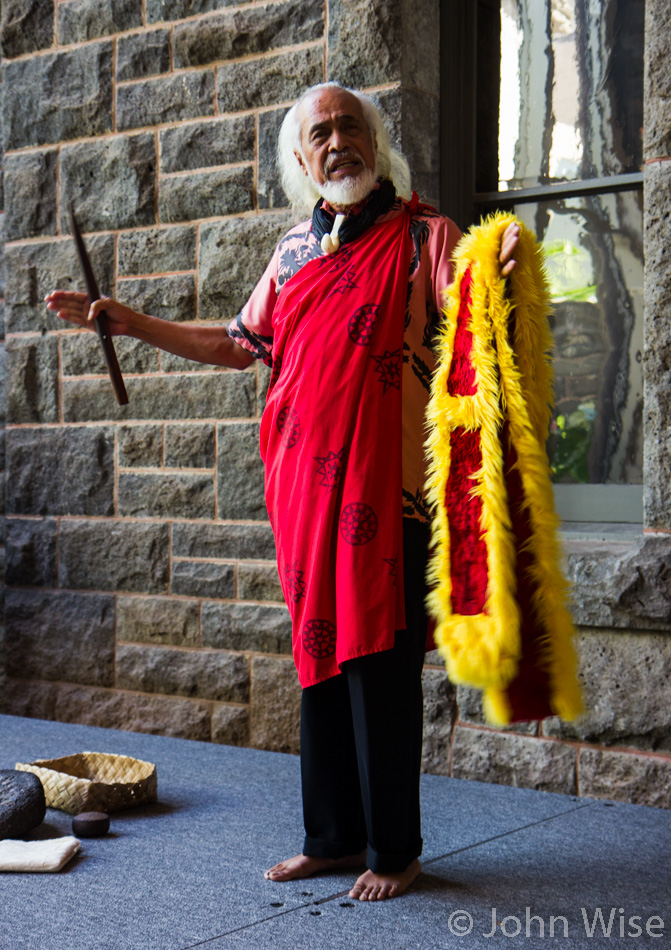
Our brief concert was followed by this gentleman giving a talk about clothing and feathers of which the exact details escape me as I’m trying to write about the day.
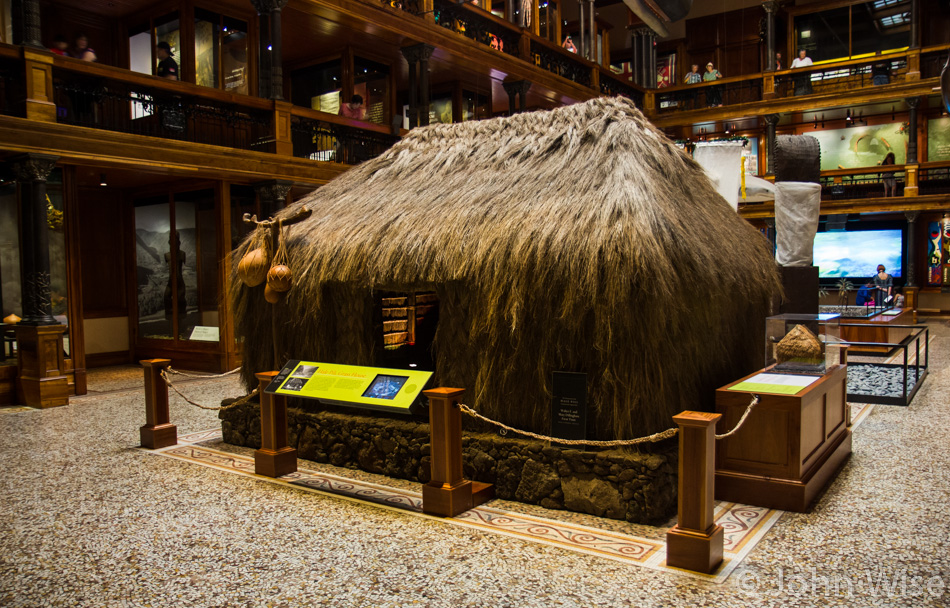
Along the way, we encounter a story that speculates that it may have been a group of people from Southeast China that had ventured away from the mainland and went on to discover and populate the Polynesian Islands before embarking on the journey over the ocean to populate the Hawaiian Islands. Funny how, growing up in America, I learned nearly nothing about the rich history of anyone else on Earth other than those we conquered.
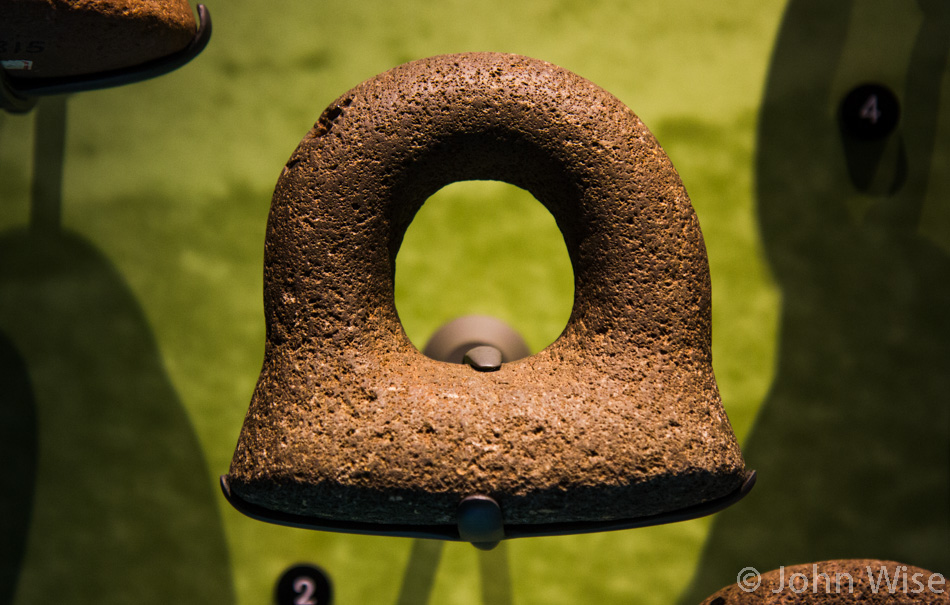
Stone and wood tools were common in Hawaii, as there were no early steelworks. Wood has a difficult time surviving the centuries, but there are plenty of stone artifacts here at the Bishop. This particular tool was used for mashing foodstuffs, particularly taro, for the making of poi.
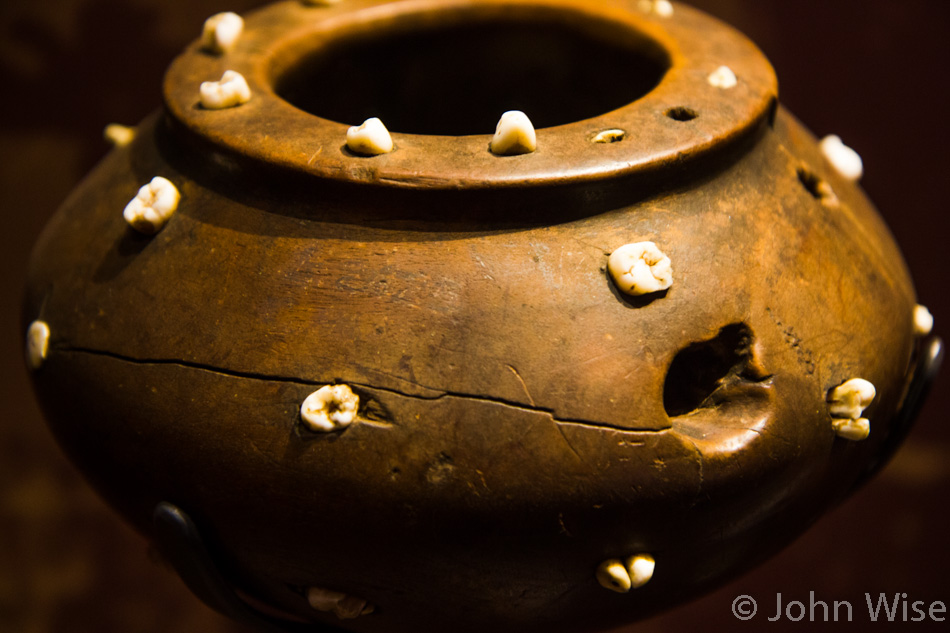
This urn with embedded human teeth is so interesting that I wish I’d photographed the card that explained its utility or symbolic meaning. So without that, I can only present you with an urn of teeth, not something I’ve ever seen in another museum or at any friend’s house.
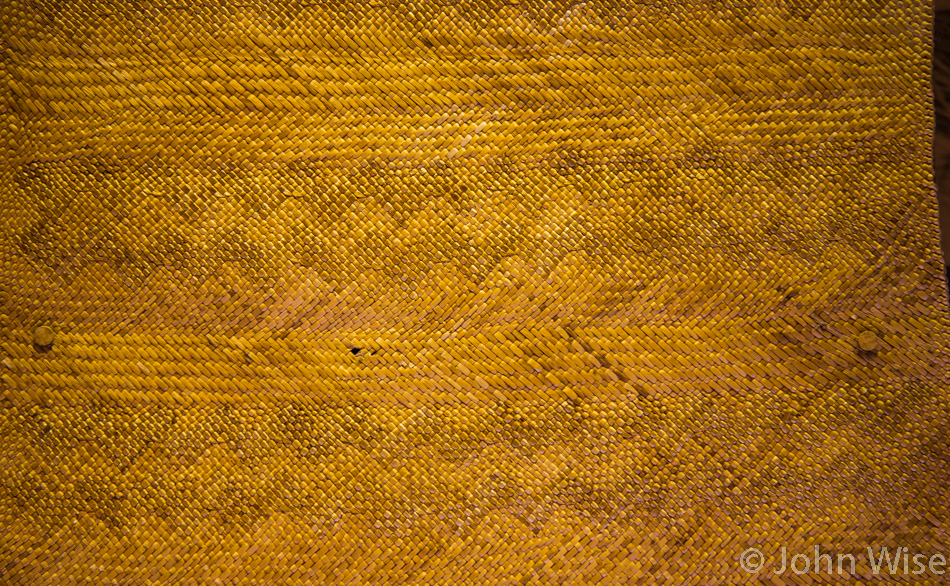
Weavings in the form of mats, basketry, and cloth are represented well in the museum with great examples.
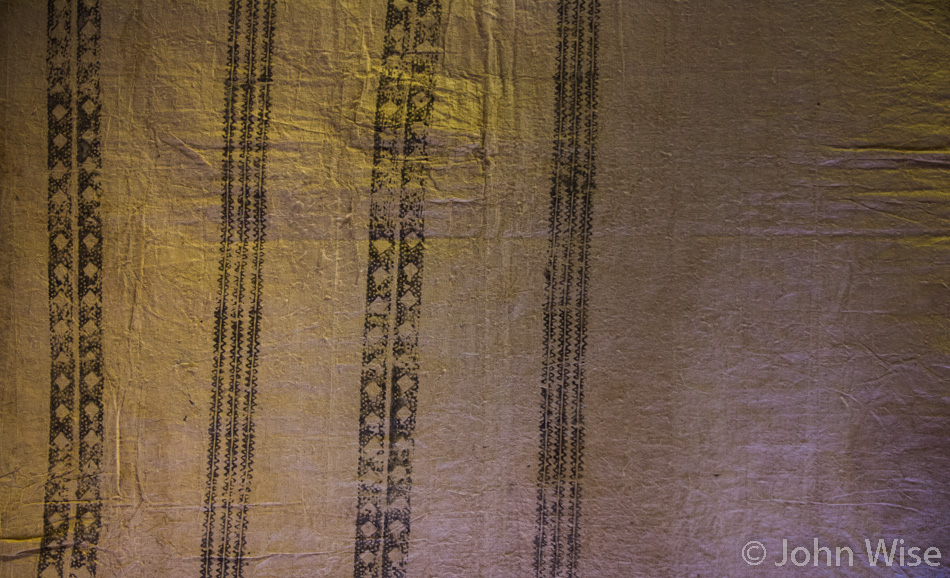
This is Kapa, as it is known in Hawaii; in the broader Pacific Islands, it is more widely known as tapa. Tapa, depending on how it’s prepared, can act as a cloth or be used as paper. It is often made of mulberry or breadfruit bark and was a common form of clothing before the introduction of cotton.
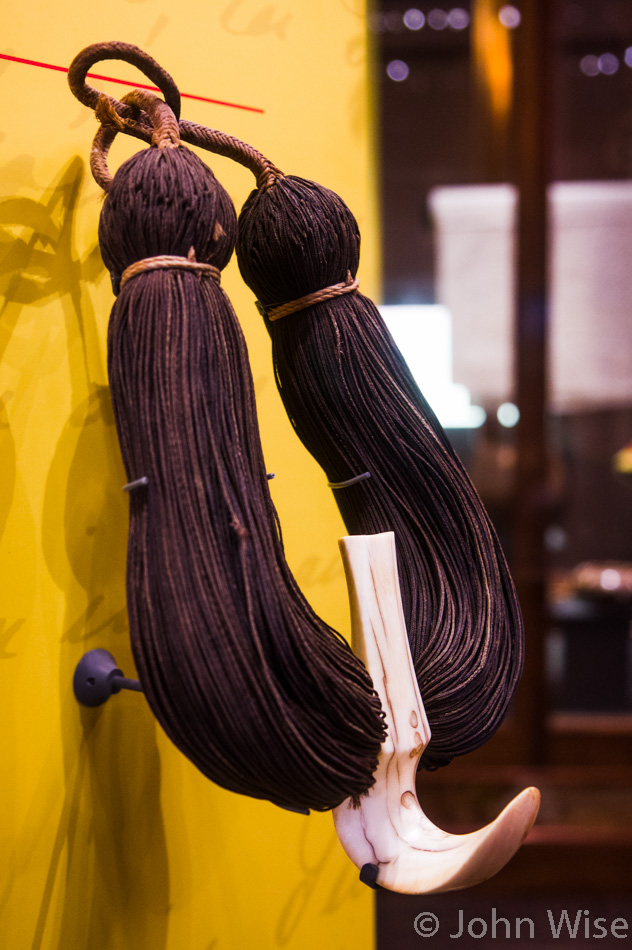
Lei Niho Palaoa, which is Hawaiian for a necklace of hair and whale ivory, is on display here. The hair was from a person of nobility and was diligently collected because it was thought to contain the power or “Mana” of the person it had belonged to. Interesting to see this mythology that there was strength and power represented by hair stretching from the Middle East to Native Americans to Polynesian culture, and it makes me wonder if the modern-day habit of keeping one’s hair cropped short and beard shaved clean isn’t a form of disempowerment.

The Ahu ʻula is a feathered cape made of hundreds of thousands of feathers that were delicately harvested a few at a time from living birds who were then set free to continue producing these valuable feathers. Why were they so important to early Hawaiians? Because the Ahu ʻula was worn by people of great power to provide spiritual protection. Seeing these in person is nearly as extraordinary as seeing the Grand Canyon with one’s own eyes; they are spectacular, profound even.
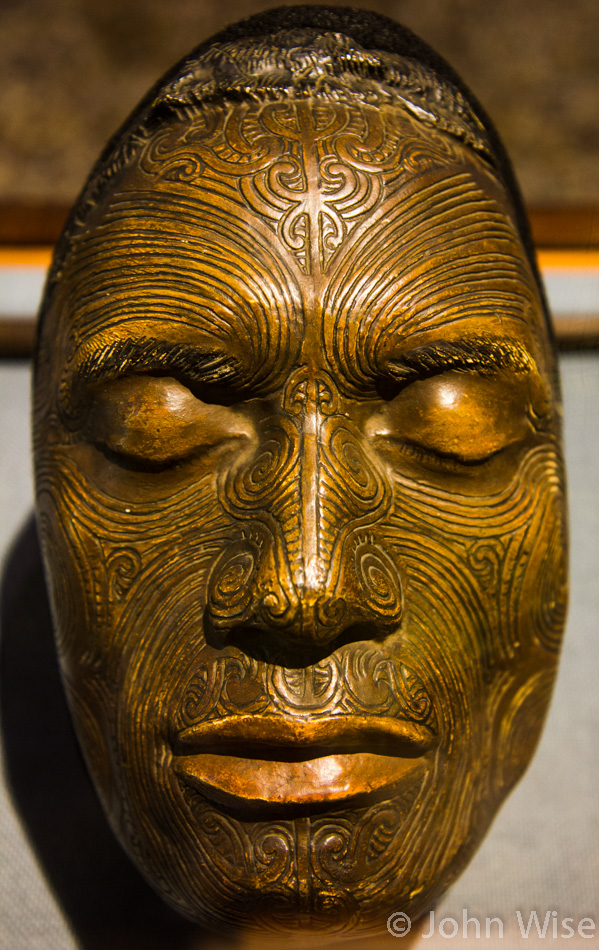
Masks of tattooed wooden figures are common among the Pacific Islanders, and as part of the culture and tradition of these areas, they are featured in the museum to help tell the story of customs and art shared across such a vast region.
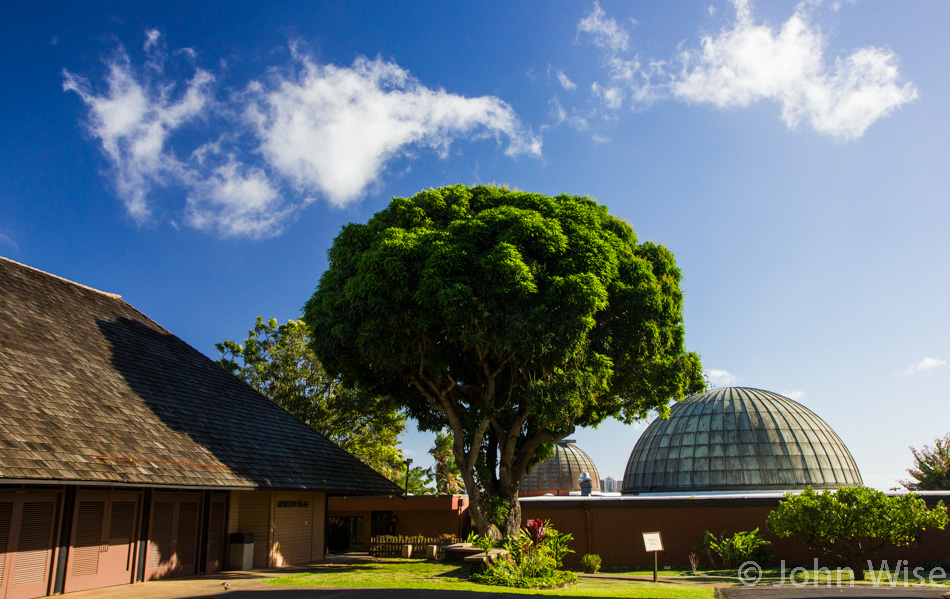
So, while we are a bit gun-shy and apprehensive about the tourist zones of Honolulu, Waikiki, and Diamond Head, we slowly warm up to their appeal, but probably more due to our interest in the history of Hawaii found here rather than the consumer and tourist culture. While still in the area with time to spare, we’ll continue on our exploration that started today in the southwest and trek up the western shore of O’ahu.
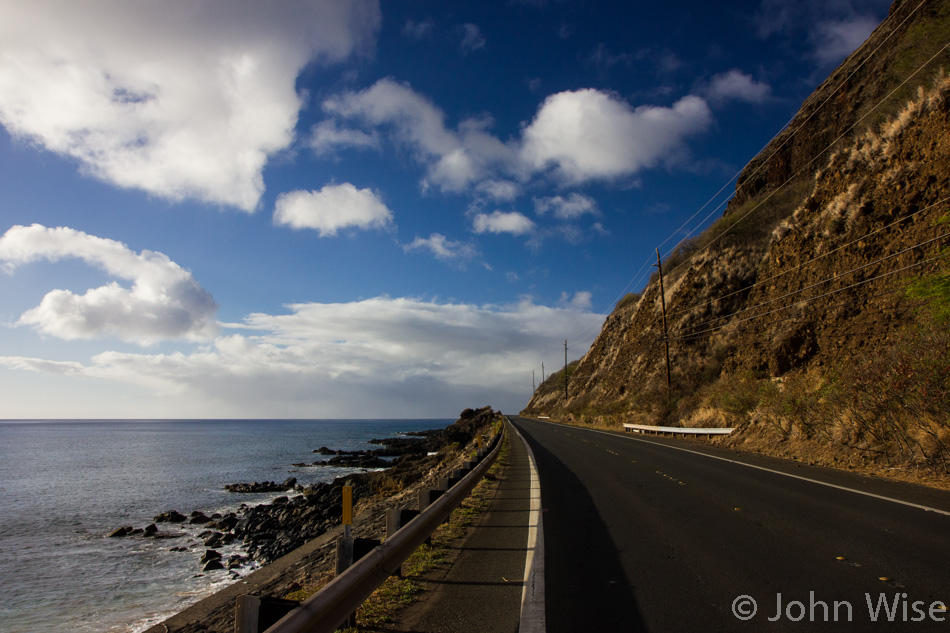
Our destination up Highway 93 is Kaʻena Point State Park. Wouldn’t you just know it, the side of the island that is a predominantly indigenous area would be the desert side?
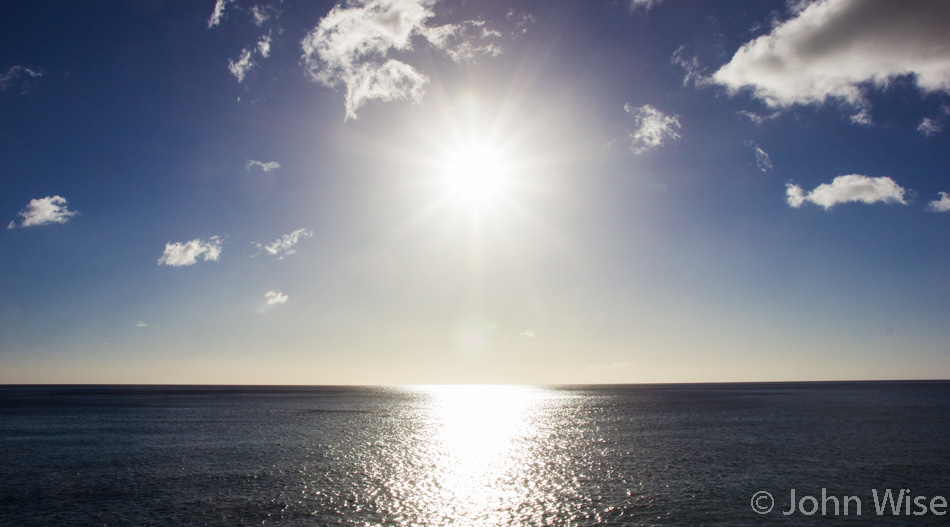
Compared to the North Shore, the ocean here is calm, with almost no surf.

With about two hours of driving to return to our lodging at Turtle Bay, we scope the area here on the western shore and quickly turn around to head back. On the other side of the island, we encounter a steady rain that is dimming our hopes for another spectacular sunset. No big deal, really, as we are having a perfect time with whatever comes our way. After a mediocre dinner, we arrived again at the hotel to a blustery, occasionally rainy evening that suggested we head to sleep early. But who goes to sleep at 9:00 p.m.? Old people, that’s who, are we old now? Maybe it’s that we’ve been going for over 15 constant hours? Nah, we’re just getting old.

